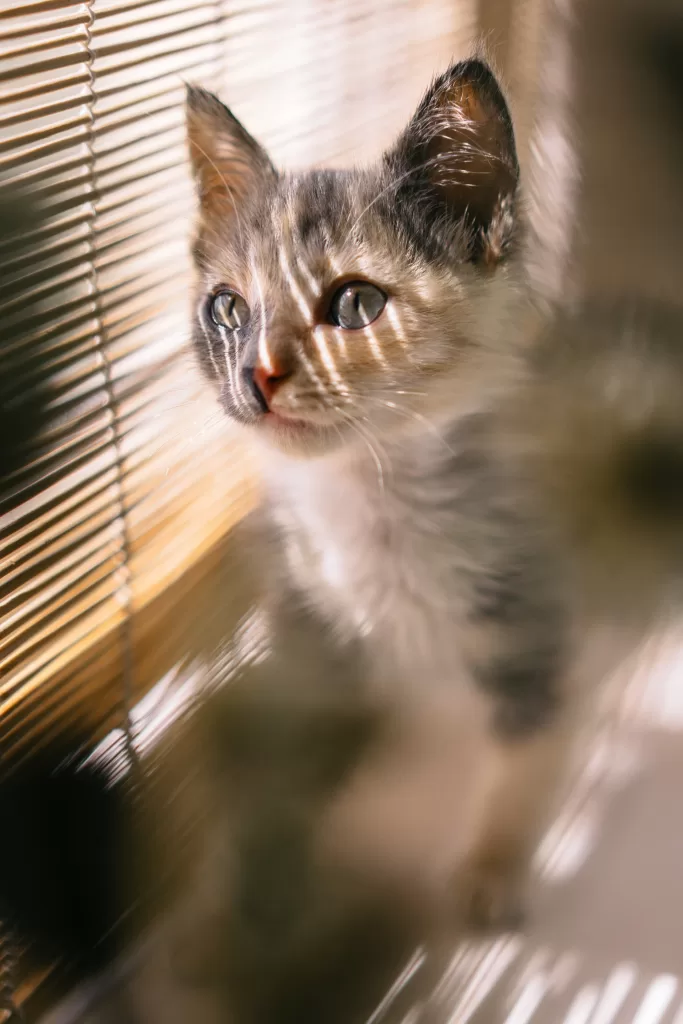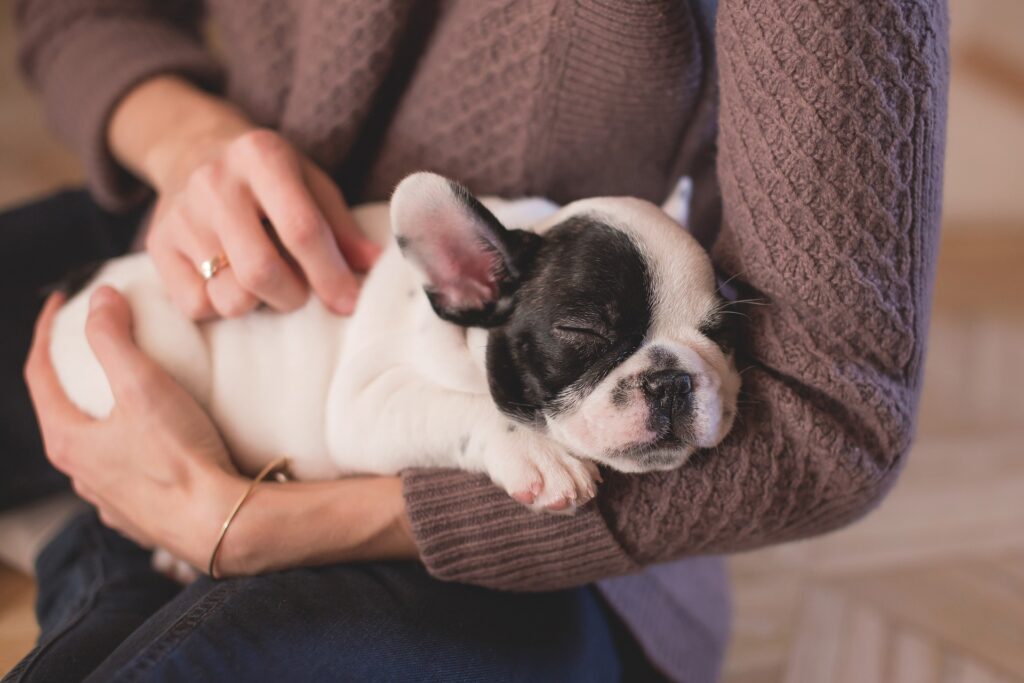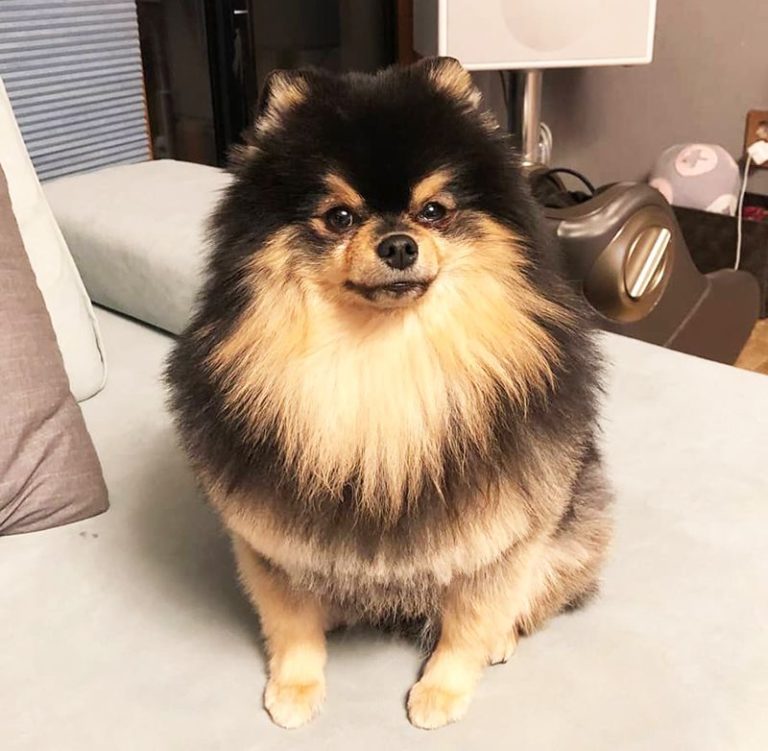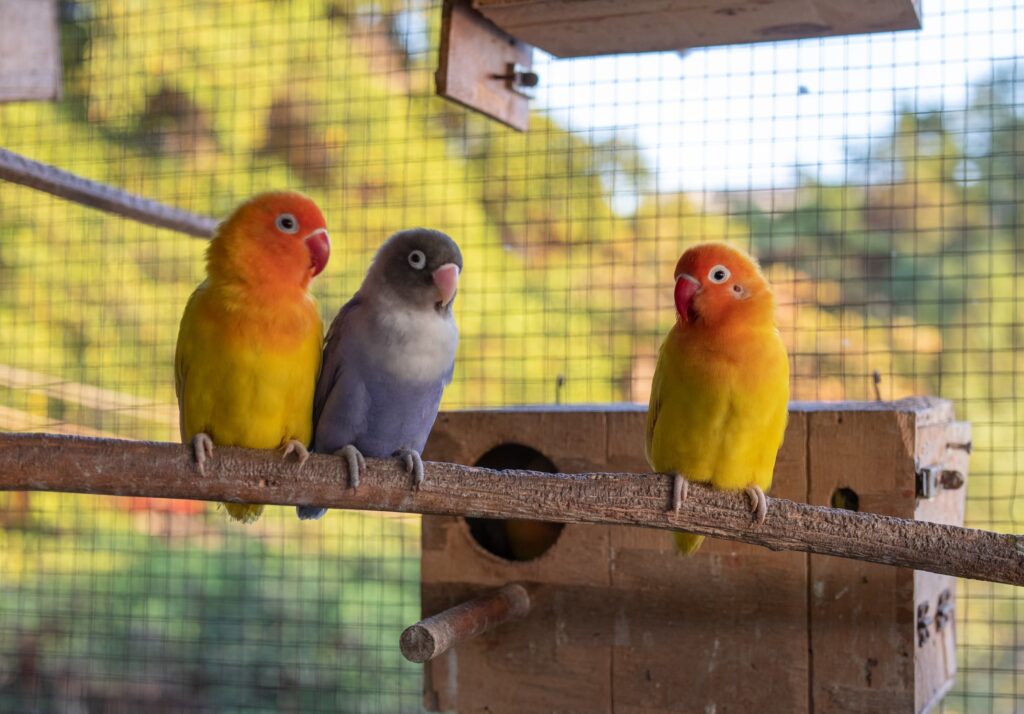
In our last blog we talked about the tips for taking care of a pet cat. I hope many of you have birds as pets, so today we are going to talk about the tips for taking care of a pet bird.
Birds as pets are gaining quite popularity nowadays. There are so many species of birds to choose from, like Parakeets, Cocaktiels, Pigeons, Love Birds, Dove, Finches, Parrotlets, Lorikeets and many more. They have been kept as pets for a very long time, estimated to be around for thousands of years.
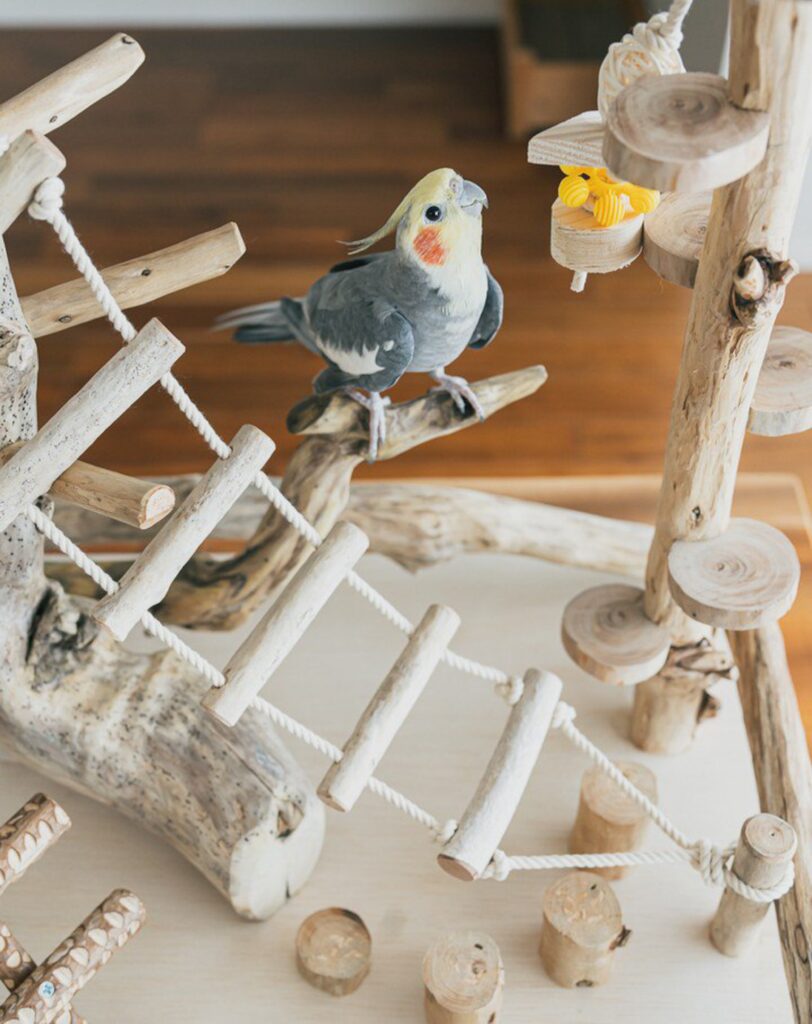
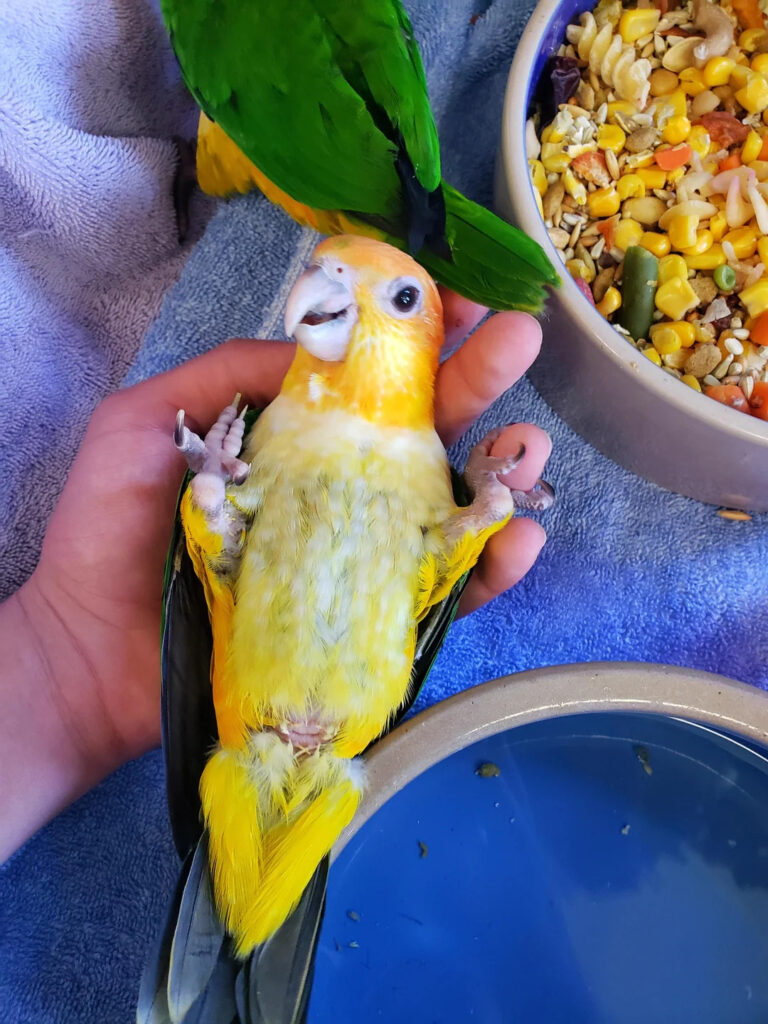
The Avians Veterinarian is the one known to look after for birds so you should make sure that the vet avavilable in your region is the rght one or that they treat birds.
Without further ado, Let’s get started :
1. What type of housing you need :
The ideal space for living for a pet bird is considered to be a cage or bird house and it is to be in kept in a corner.
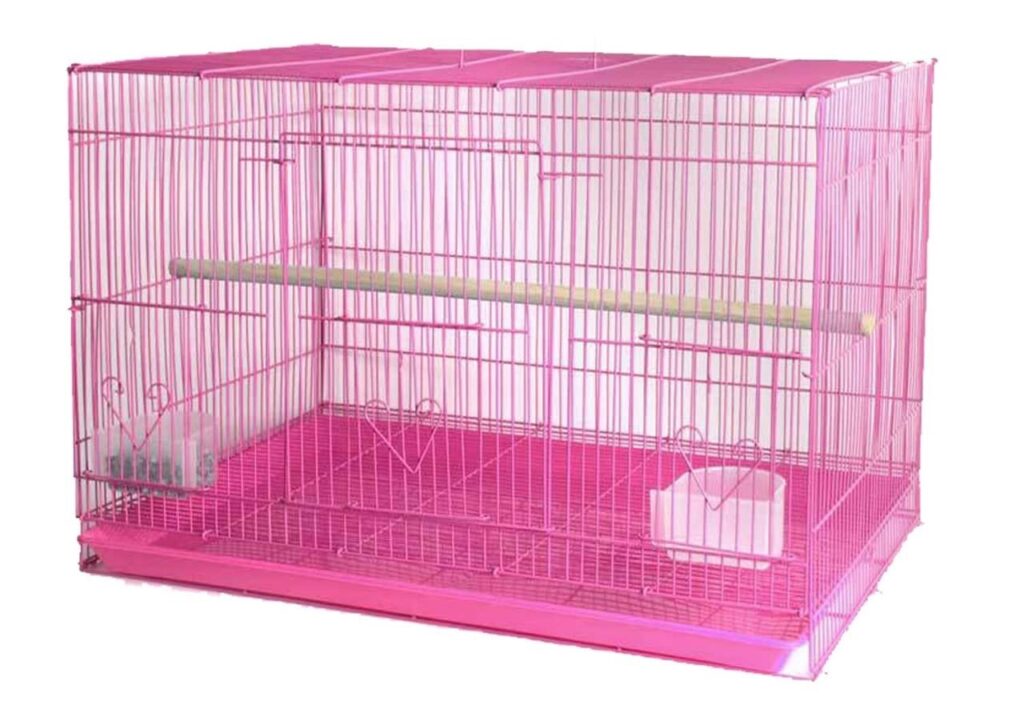
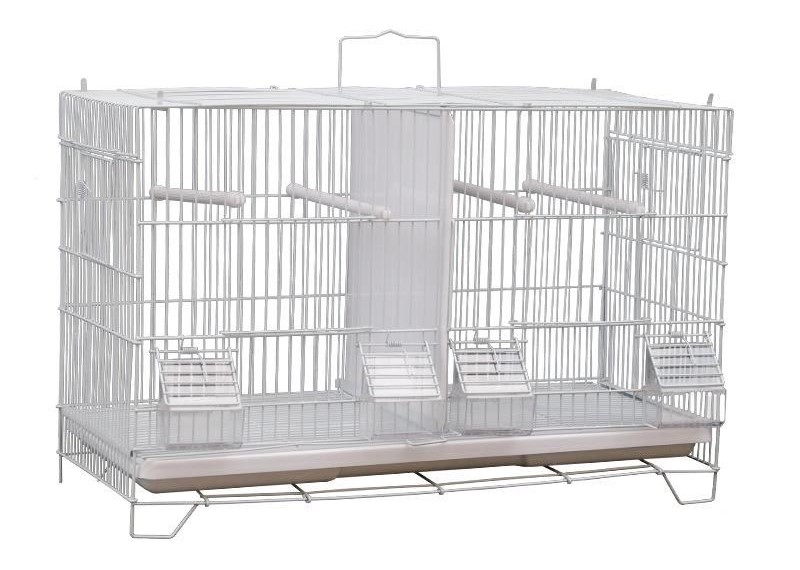
As we cannot keep them in openly in our house and they get to be around us. The cage is usually kept in a corner as to enable he bird feel secured and protected. If you keep them in an open plcae or on the top of table or any furniture, they may feel like they will get attacked and will feel restless. This will also stress them out and make them aggressive.
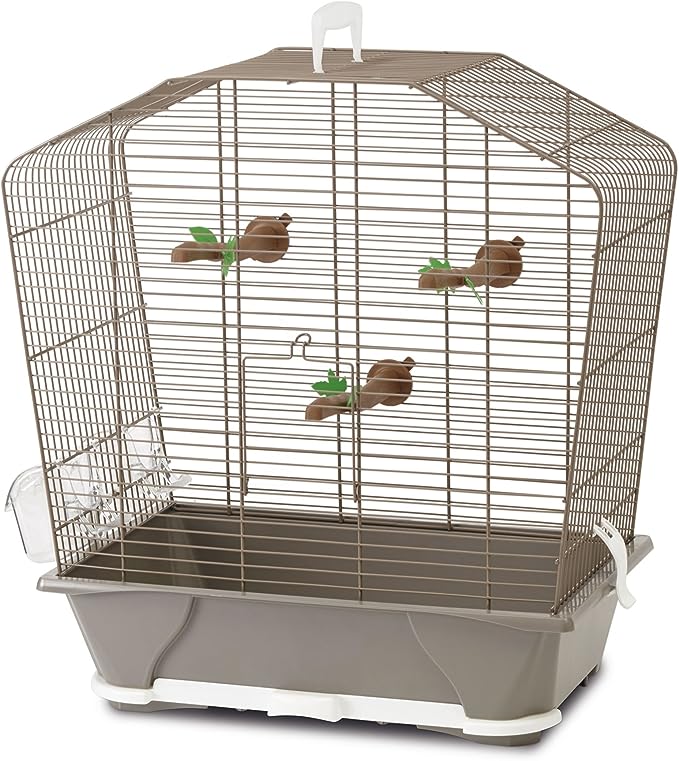
These pictures are just an example of a cage which you should get when brining a home pet bird. Remember the more birds you have, the bigger cage should be. They like to climb and move around so a big cage should be used.
You may consider getting a separate cages for sleeping or a cage with casters so that if you are waking up late at night they will not be disturbed. Places and objects for them to perch on and be above you will have them to feel more safer.
2. Which type of cage is suitable?
Generally if you are thinking about getting a bird cage then you should get aa big cage. Small cages not only restrict the bird’s movements but also stun their growth. A cage with enough space for the bird to fly around and stretch their wings fully is the best one.
There should also be enough place to move around, climb the cage, fly from one end to another and flap their wings.
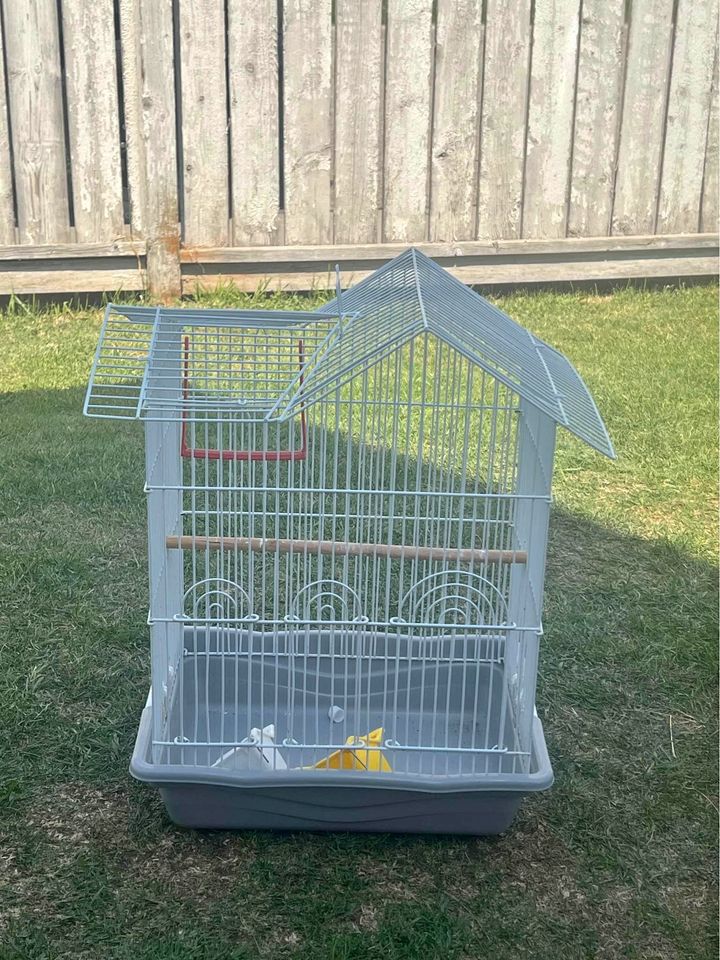
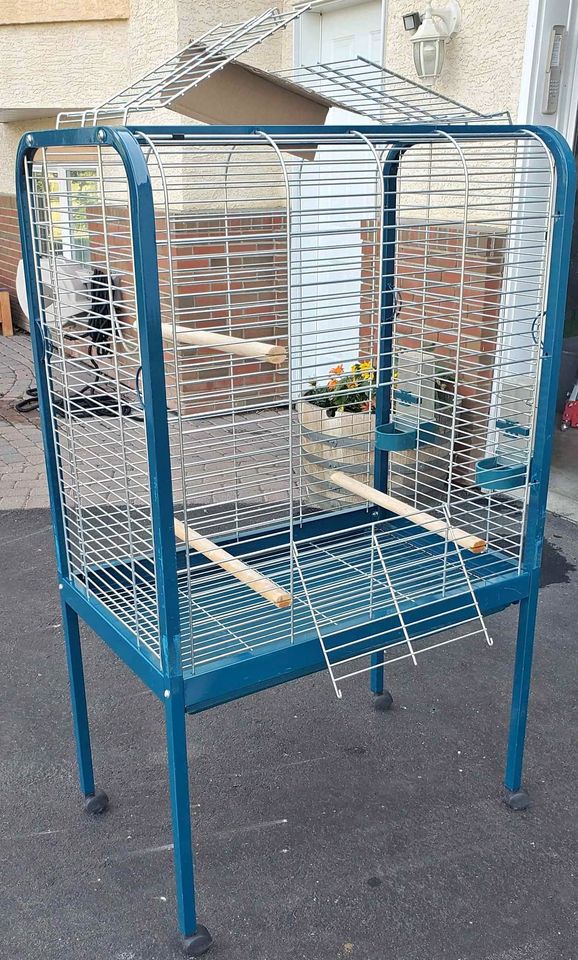
The width and height should not be too small and the cage should not touch the head of the bird. Metal and material used for the cage should also be looked after. The type of door in the cage is also important to keep in mind because the doors which open to the side is the safest.
Check everything is ok and there is no space between the bars, doors or any openings, so that the birds do not escape or get caught and injure themselves.
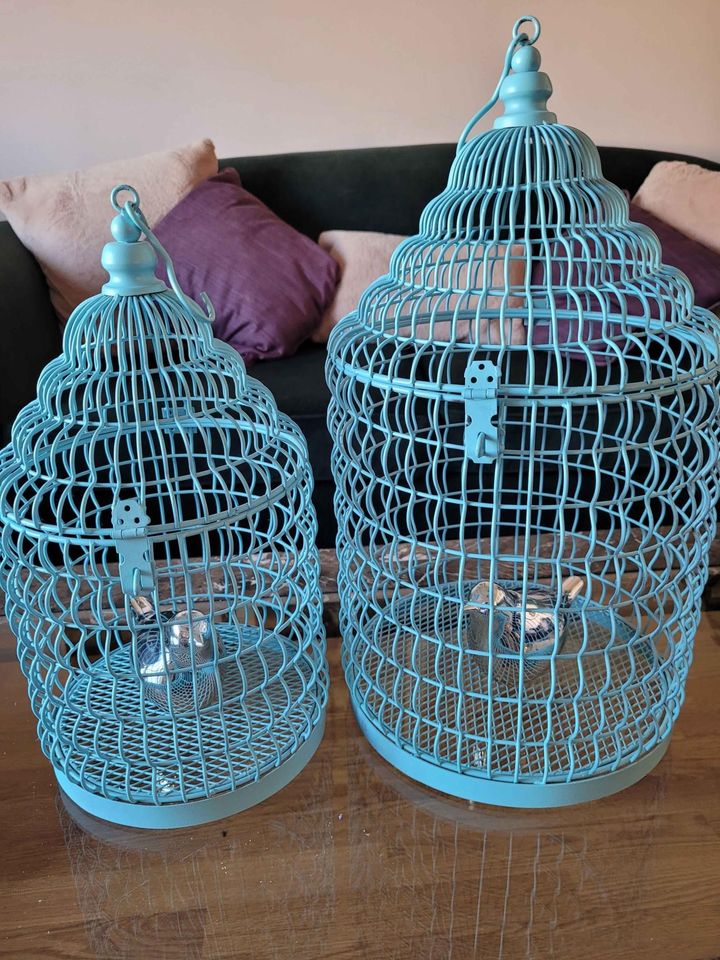
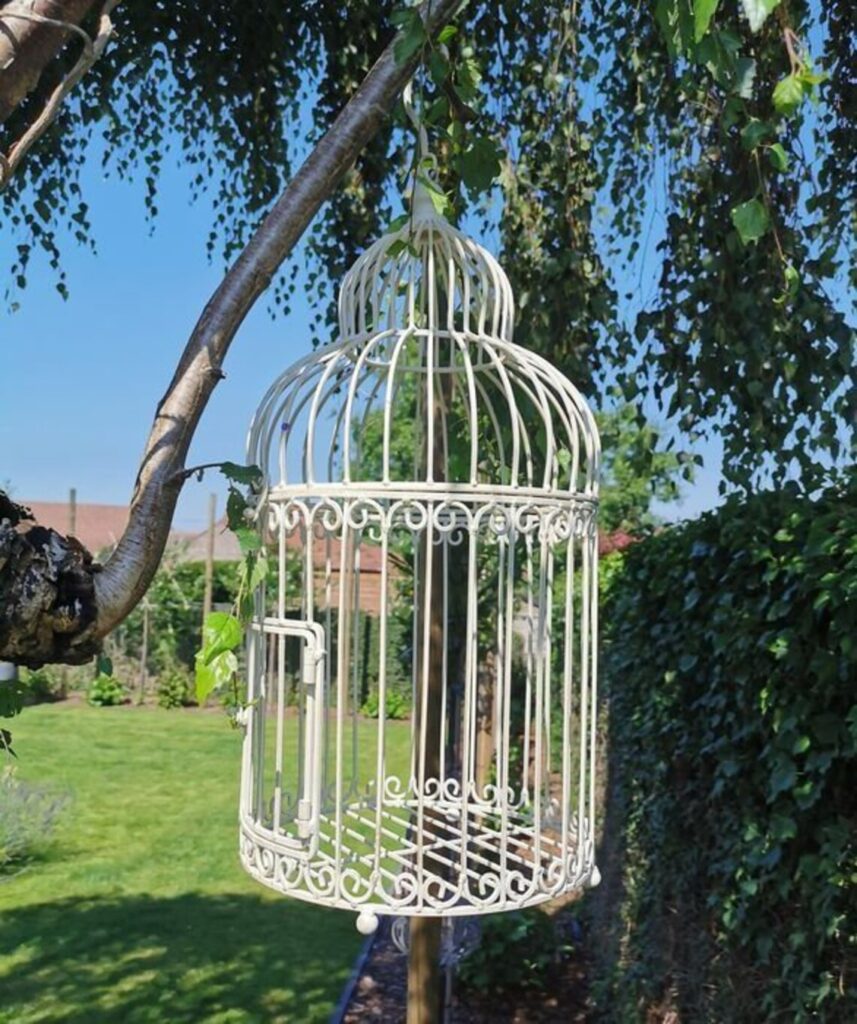
The cages shown above do look beautiful but these are not the suitable cages for your pet birds. They do not proivde the space to move around, no perches can be kept and even toys such as swings and ladders cannot be kept inside them.
Also make sure that there is a pull out tray and a wired grated bottom for easy cleaning of the cage and better safety of the birds. Do not use materials like wood chips and corn cobs they are hard to look after and the birds may ingest them. They also causes risk for infections and health problems.
2. Objects for Perching :
Place a lot of different types of perches as they like to sit on places especially on twings and wooden stems. You can place a lot of natural wood which you can find easily in a park.

Trees such as fruit trees and stems from a regular trees can become best natural wood perches. Glass, concrete or perches made from abrassive material such as sandpaper should be kept away and never used for the perches.
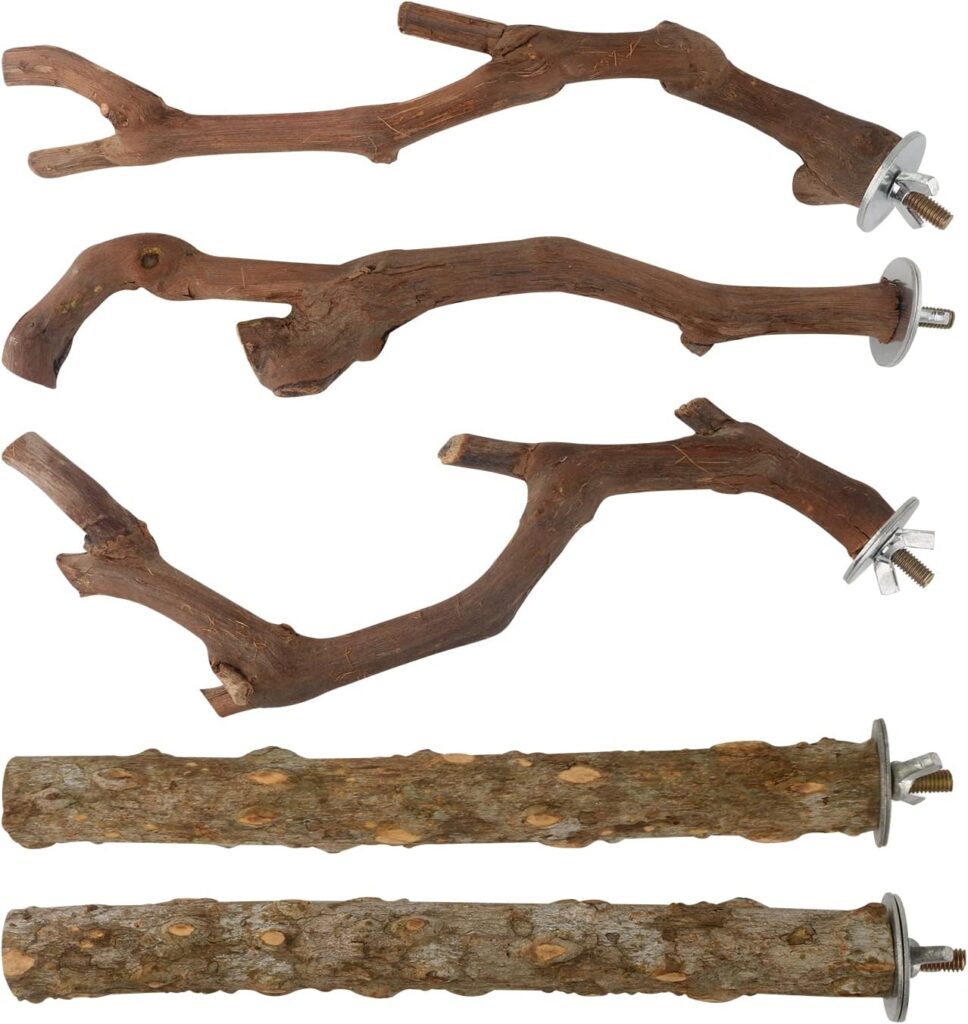
You can place perches in different places in the cage, in different positions, and in different sizes, shapes, and textures. If you want then you can use ropes so that they may perch on it as well. Do not use harsh and rough surfaces for the perches as they will damage the feet of the birds. Their nails are no cause of worry but should be clipped or trimmed as if left without care they will hurt them.
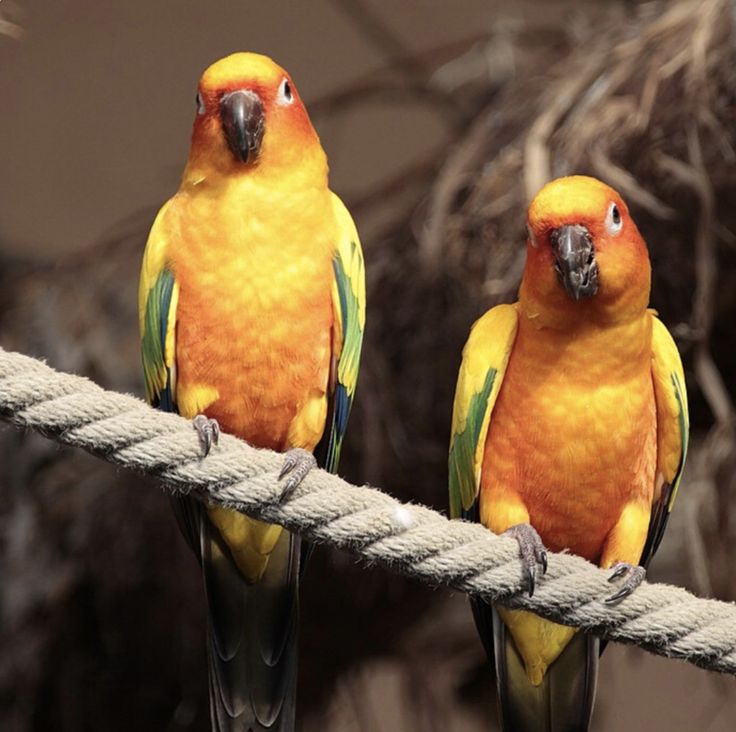
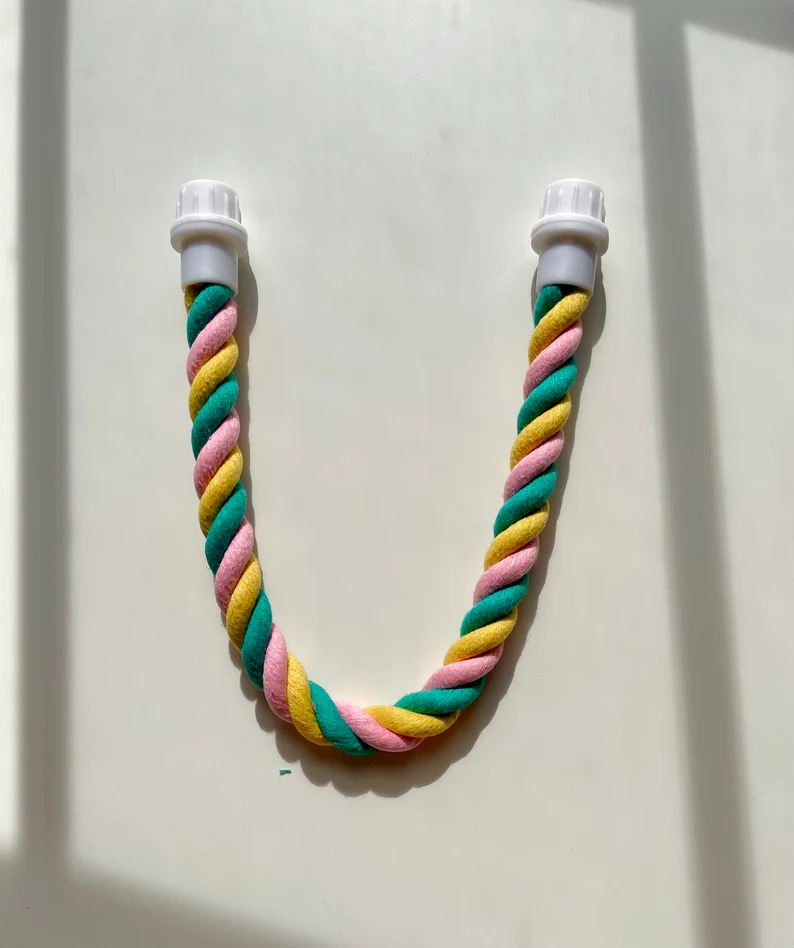
Change ropes and perches if they are decaying, soiled or frayed. Also make sure that they do not eat the pieces or tiny bits of woods and ropes as they can make their stomach upset.
3. Tips To Make Bird-Friendly Environment :
The place for a pet bird should not be to cold or hot. The best temperature range is considered to be 65 Degrees Fahrenheit to 85 Degrees Fahrenheit that means around 18.33 Degrees Celsius to 29.44 Degrees Celsius.
Anywhere cooler or hotter than these temperatures is not suitable for your pet birds. Also consider having a pair of birds, never keep a single bird as pet.
Keep away the cage from placing directly in front of air conditioners and heaters, and heating vents. access of sunlight for Vitamin D which helps in calcium production and to keep bones healthy however, keep them away from UV Rays. If you have an aviary outside of your home then keep it protected and make sure that there is no access given to the predators.
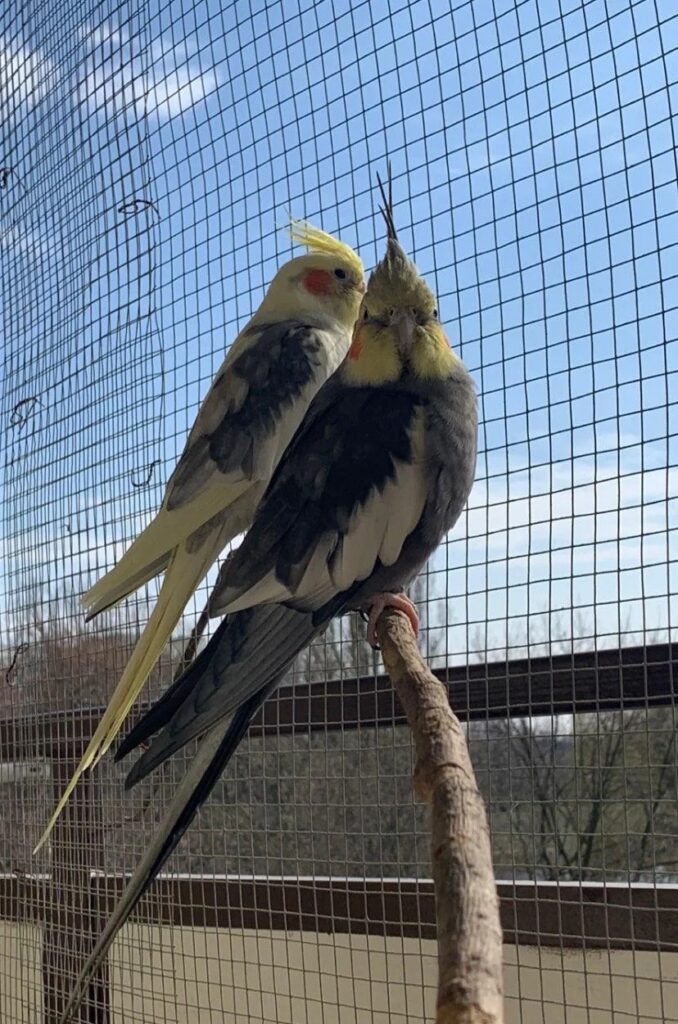
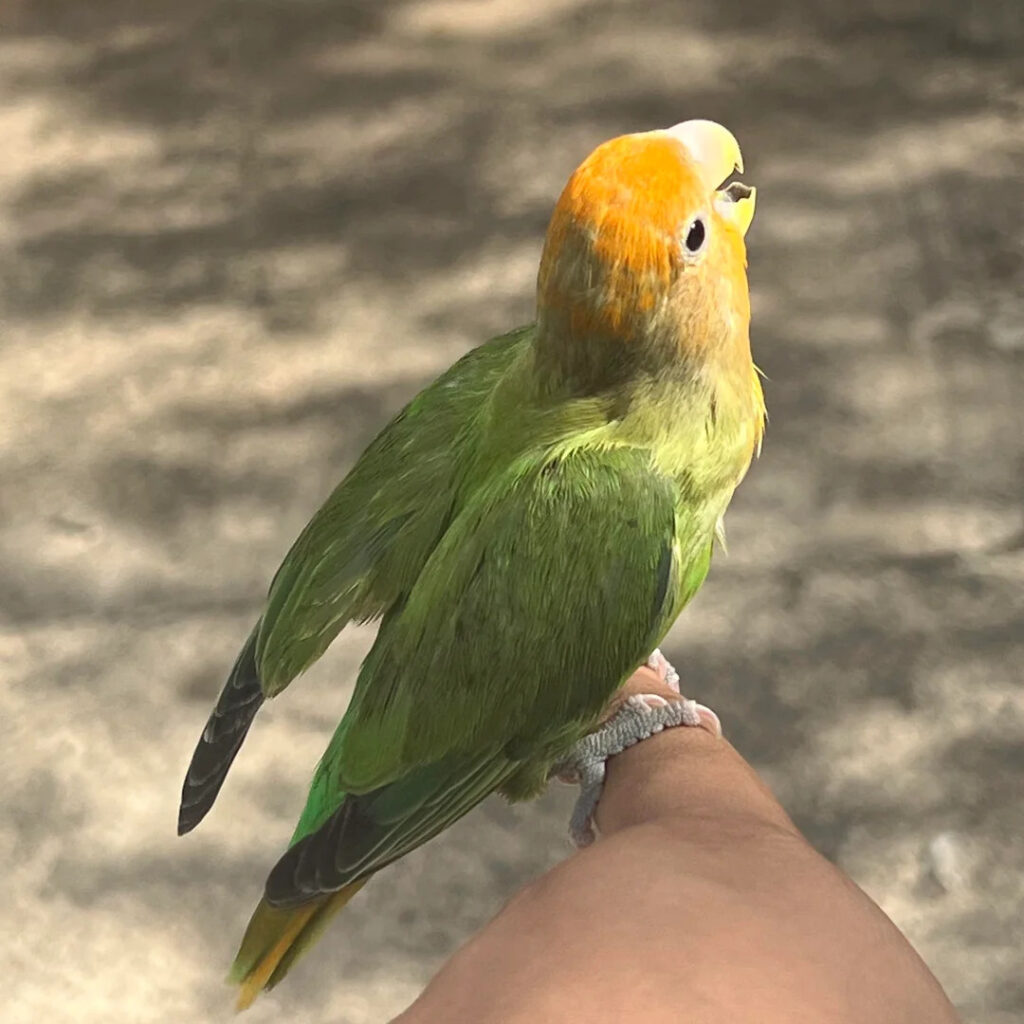
Look out for insects, and pets and that your bird can stay away from direct sunlight. Remember to take your pet out daily for some time and give them lots of attention and love from your side. These tips for taking care of a pet bird will help you a lot for making a bird-friendly environment at home and for outside aviary.
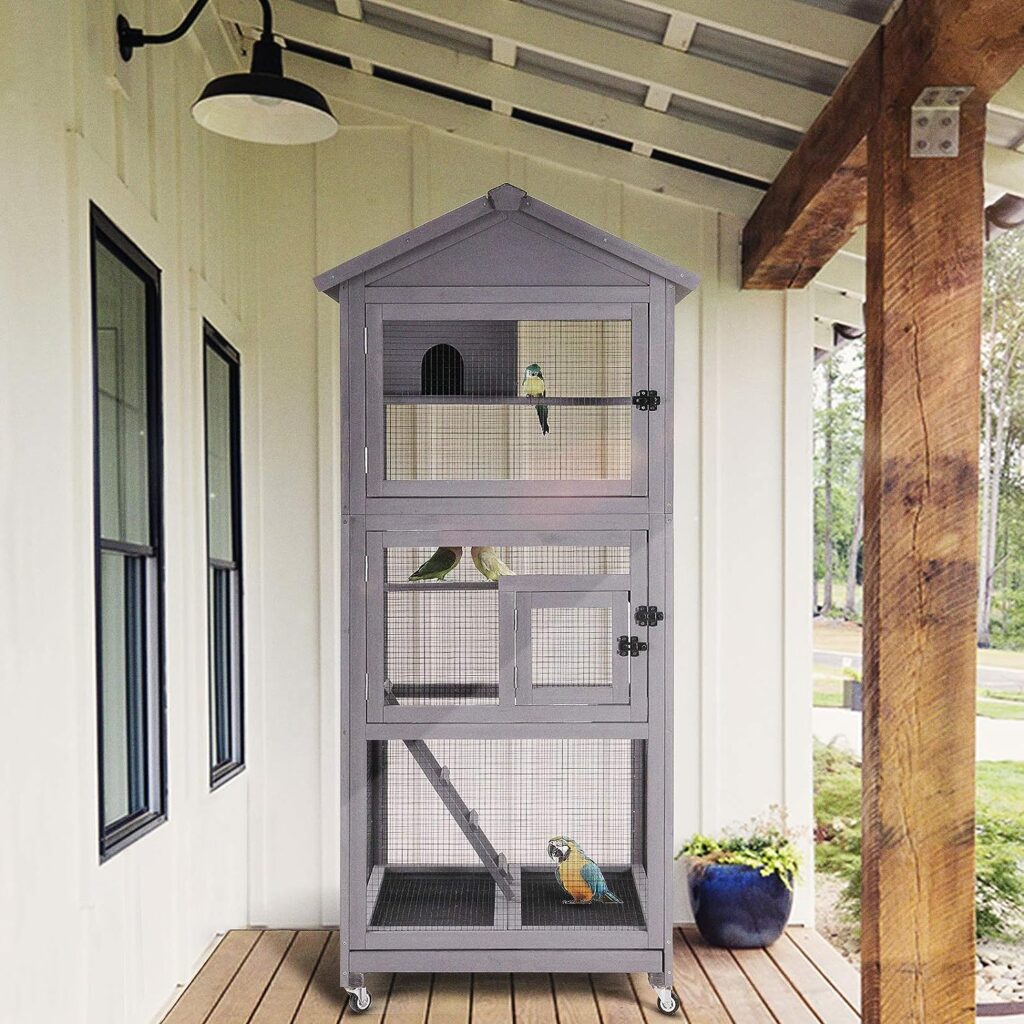
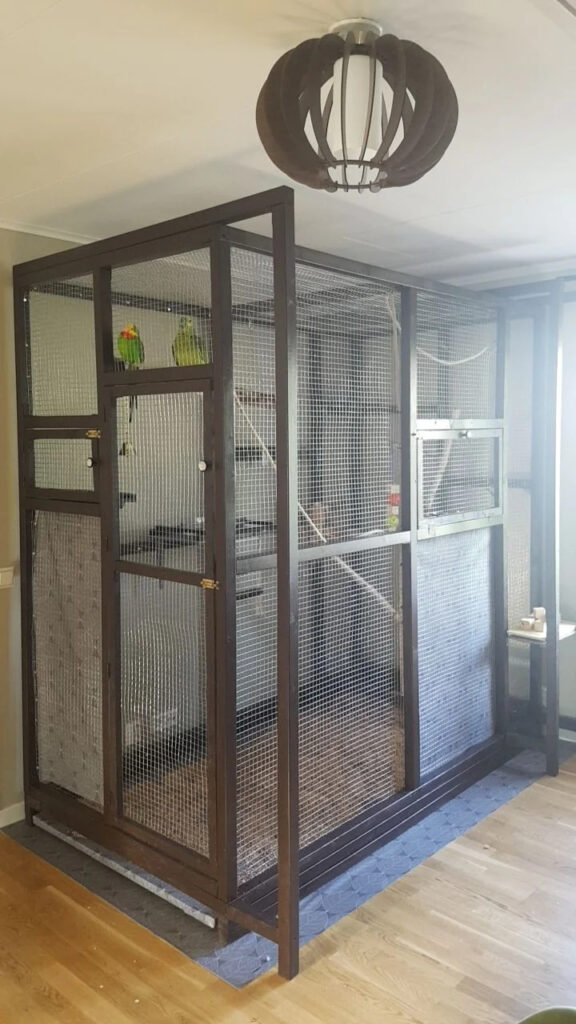
The images above shows an outdoor aviary with an indoor aviary. This is usually how an aviary is like and it can have many birds but requires a lot of care and maintenance, but if you want one then I’m sure nothing matters and sometimes it’s worth it as well. Many people either get a customized one or buy a ready-made aviary but it depends which type of the avairy you want.
In the image below we can see an indoor aviary and the banana you see outside the aviary is just for scale, just in case you are wondering why it is there.
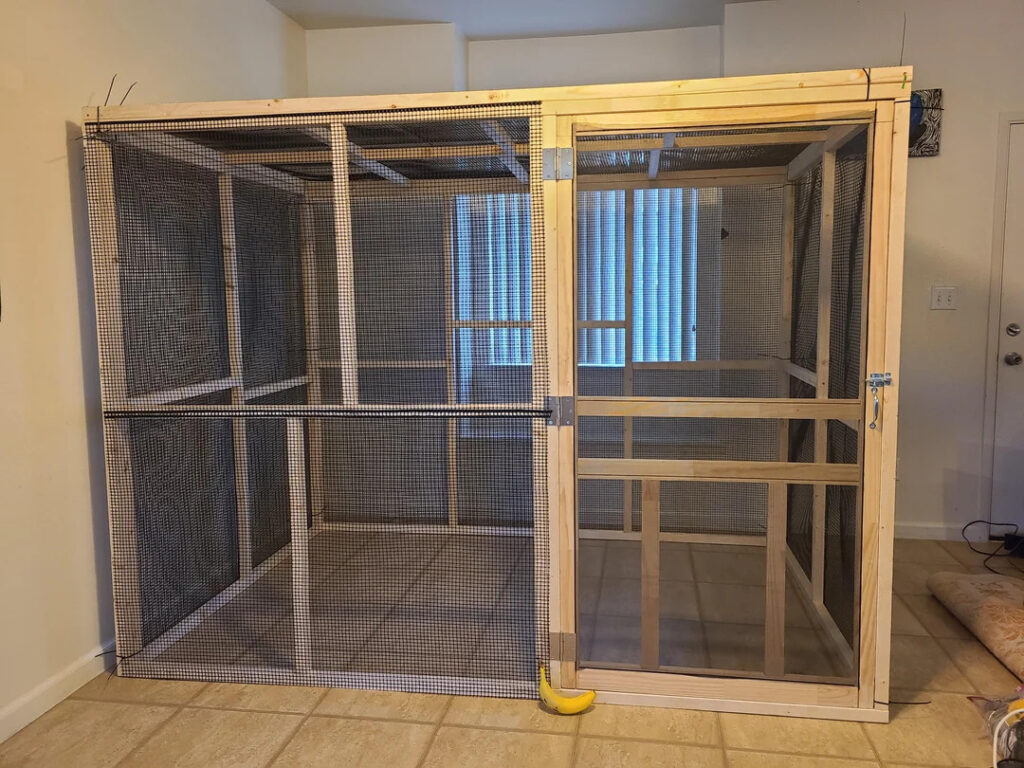
Play with them and have lots of interactions with them as they are social and leaving them withput attention and interaction will make them aggressive and they will develop behavioral issues. Mkae sure that they have perching area out outside so that they can sit on them and do not chew your furniture and ruin it.
Provide them a block of calcium to keep calcium deficiency away and promote better bone development, and it will also kee their beaks in shape by persistent rubbing of the beaks on the blocks. Because if their beaks are left to grow they will get injured by that and will not be able to eat.
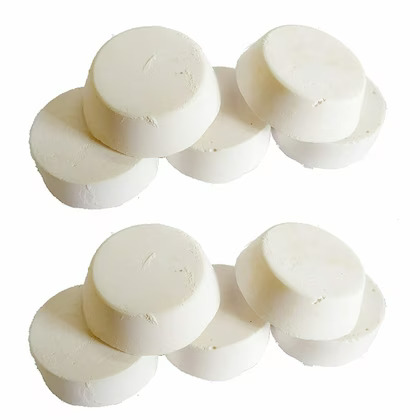
Toys for chewing are also avaliable and there are plenty of toys to choose from but remember they should be made from toxic material and should not injure or cause any problems to the birds.
Keep the fans off, if they are outside because there are many cases in which the birds got injured and killed by colliding with the fan’s blades. Let them fly and keep an eye for them. If they are kept in their cages all day long, they will likely become depressed and overweight.
Also provide a little greenery to them as they love nature. They may not live outside but can be near trees and plants. You can keep edible plants and woods, plants which are safe, non-toxic and can be kept near the birds.
The list of all the plants which are considered safe is as follows :
- Spider Plant
- Rose
- Zebra Plant
- Bamboo
- Areca Palm
- African violets
- Sword fern
- Dogwood
- Spider Plant
- Begonia
- Bird’s-nest fern
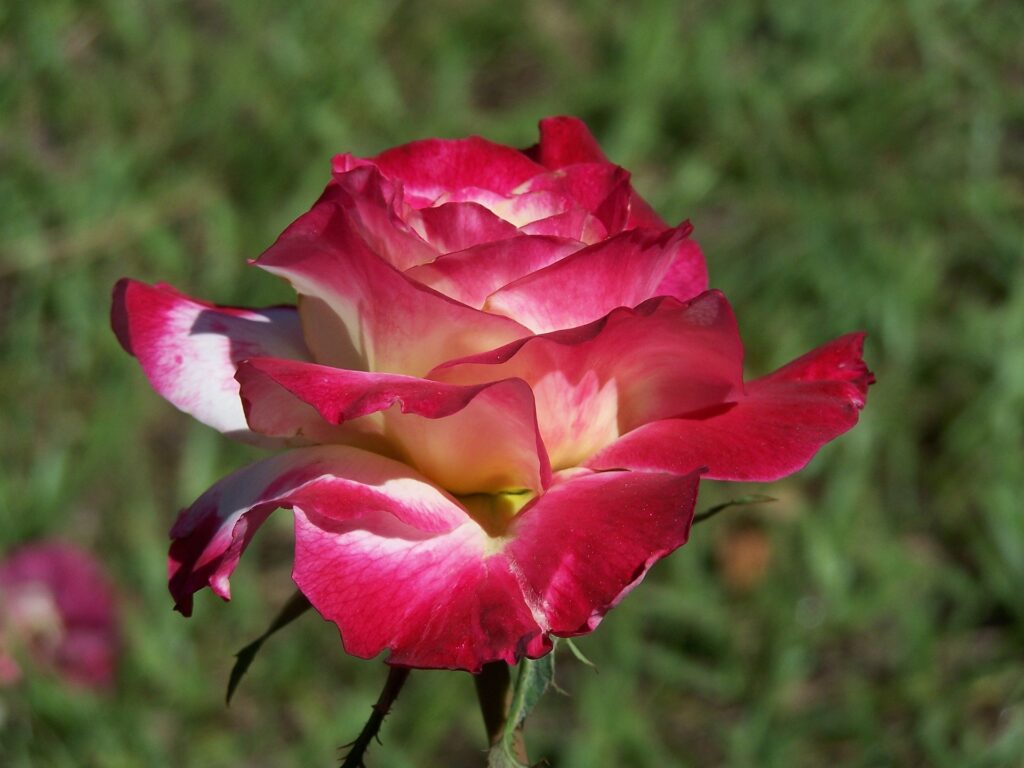
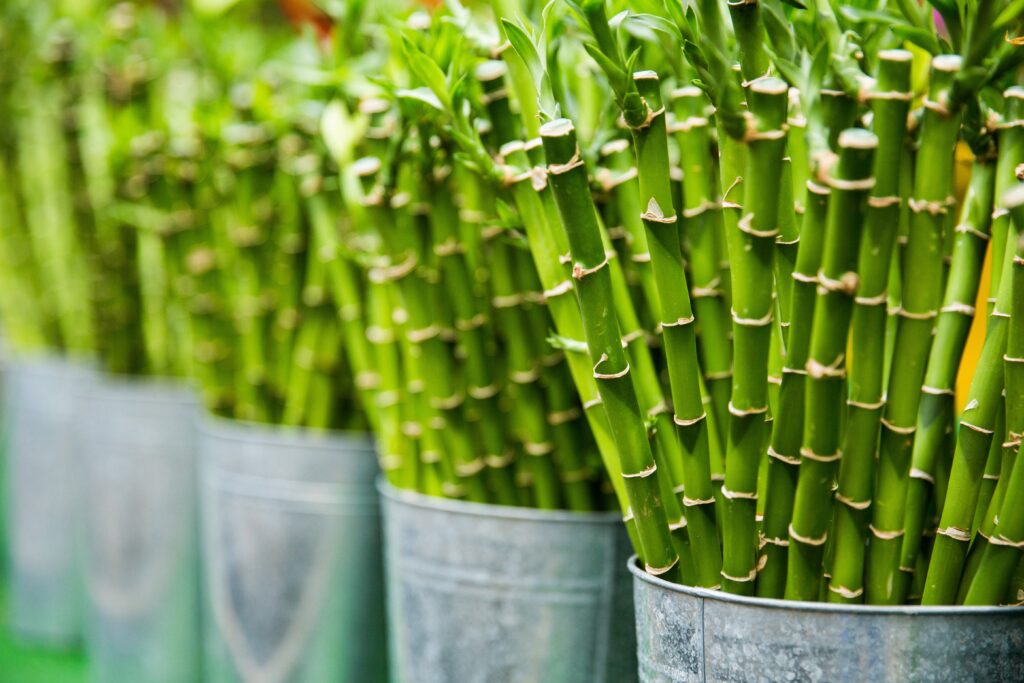
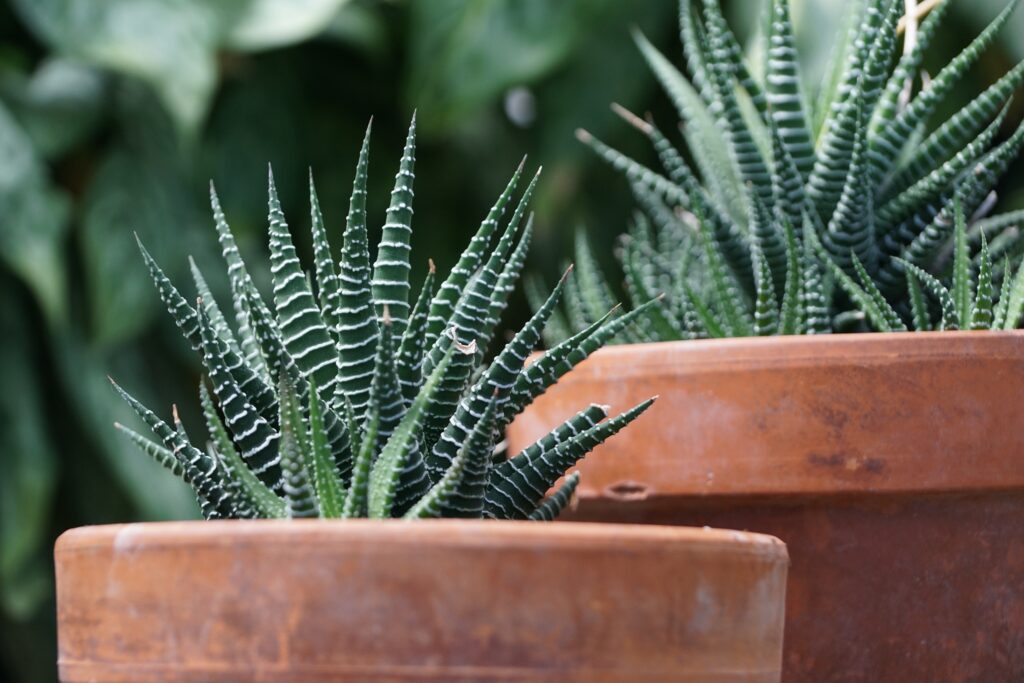
- Bottlebrush
- Honeysuckle
- Dandelion
- Eucalyptus
- Orchid
- Sensitive Plant
- Petunia
- Radiator plants
- Chickweed
- Virginia creeper
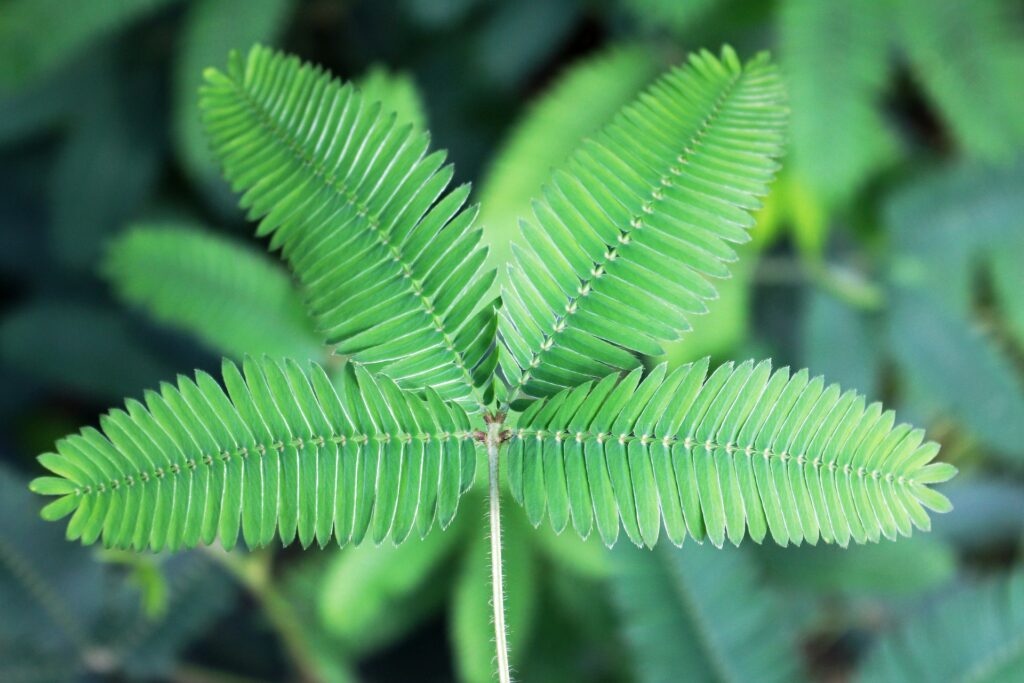
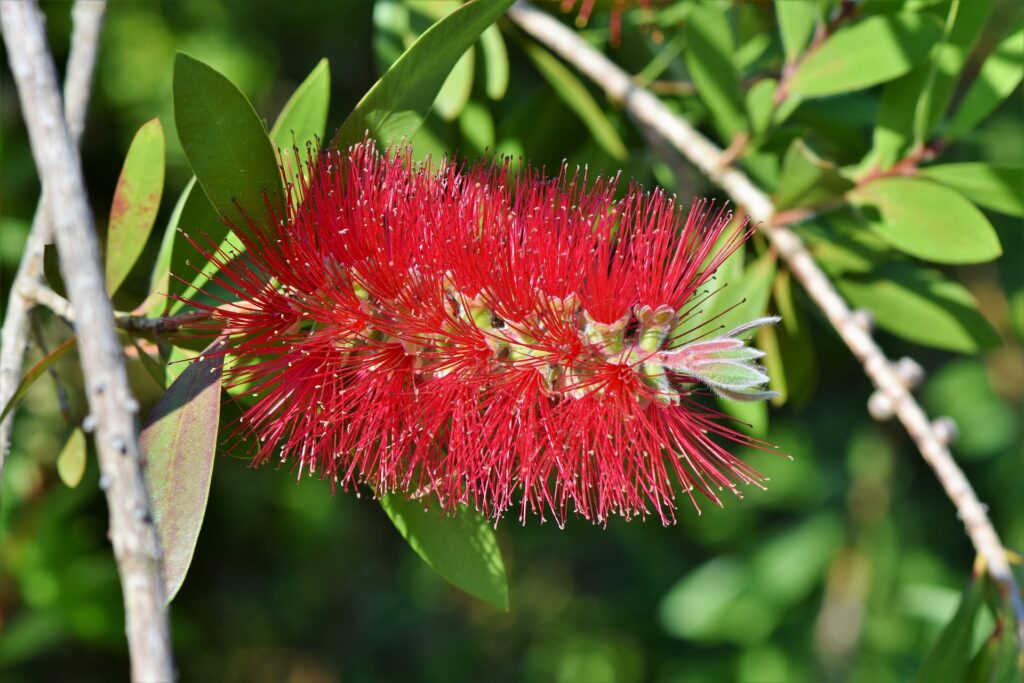
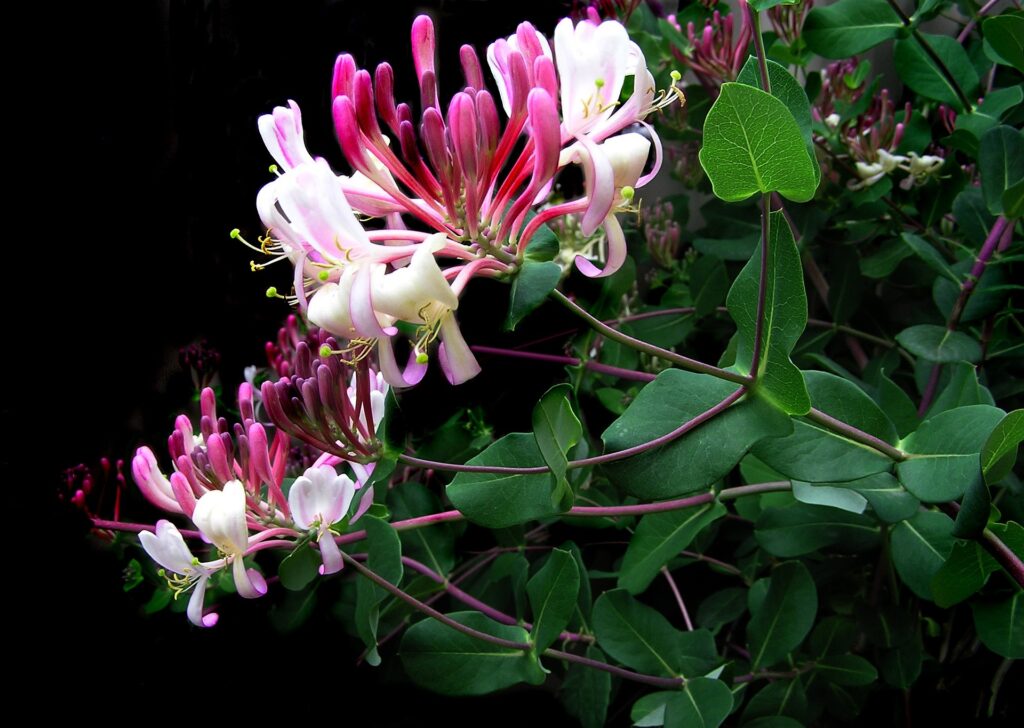
- Toyon
- Beautyberry
- Aloe vera
- Corn Plant
- Easter Cactus
- Eucalyptus
- Wandering Dude or Purple Hear
- Burro’s Tail
- Baby’s Tears
- Peperomia
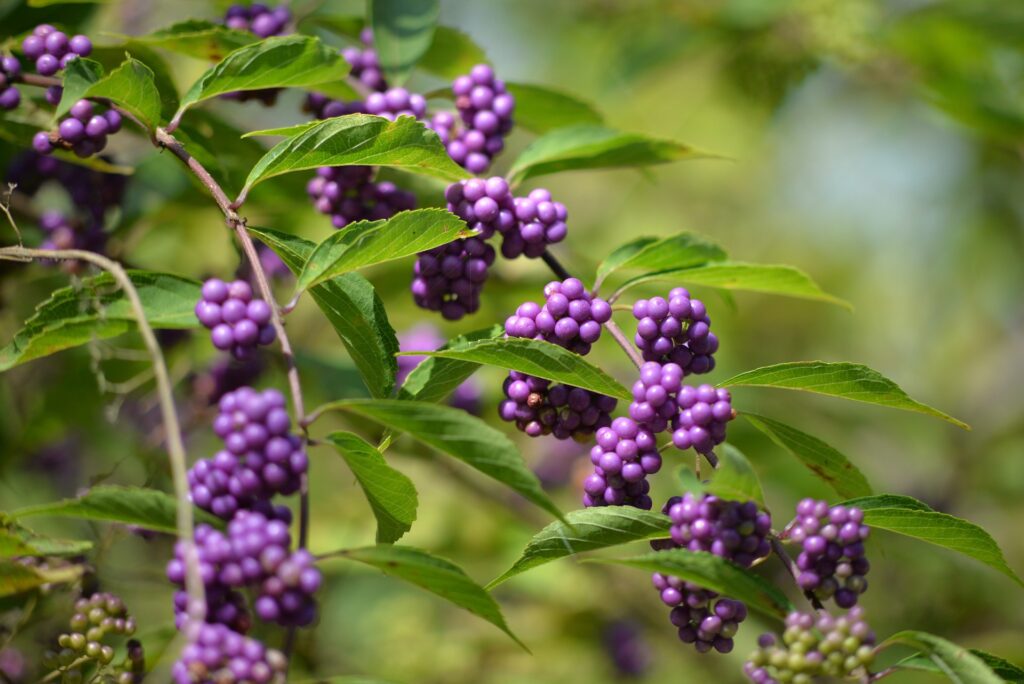
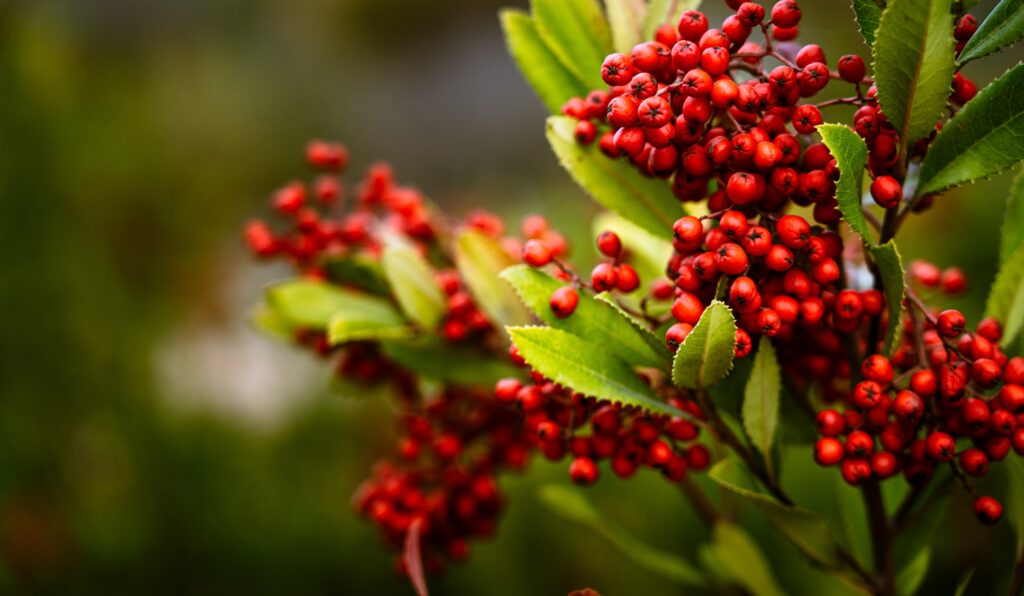
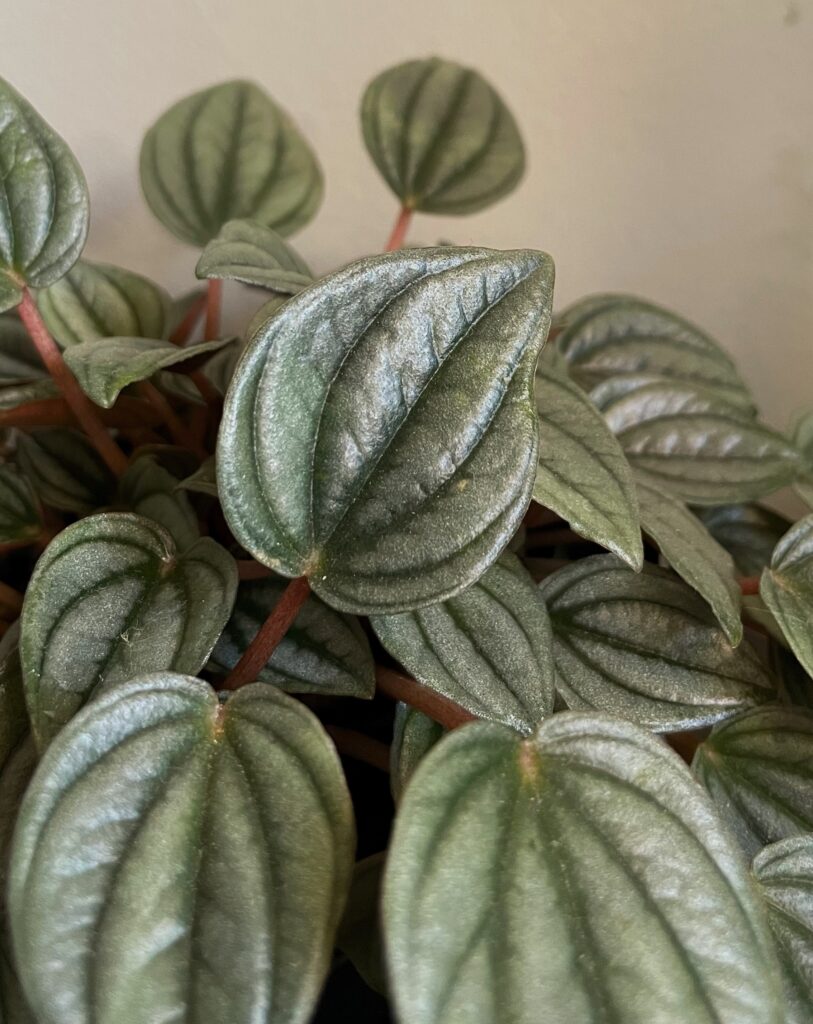
- Pittosporum
- Purple Passion
- Button Fern
- Maidenhair Fern
- Nerve Plant
- Hen and Chicks
- Spinach
- Dogwood
- Kale
- Basil
- Mint
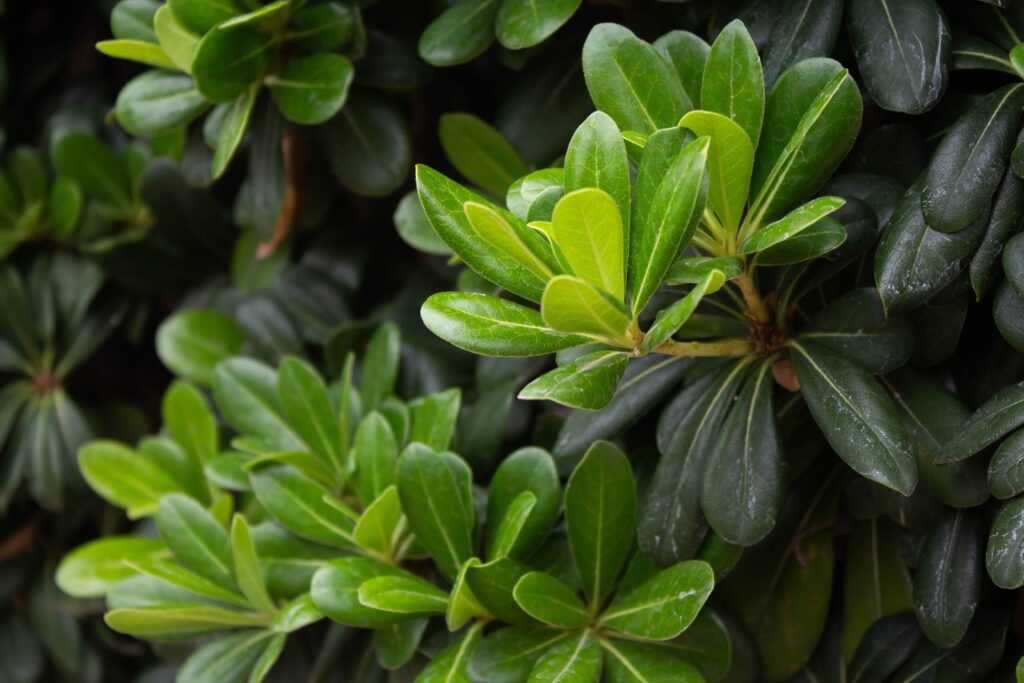
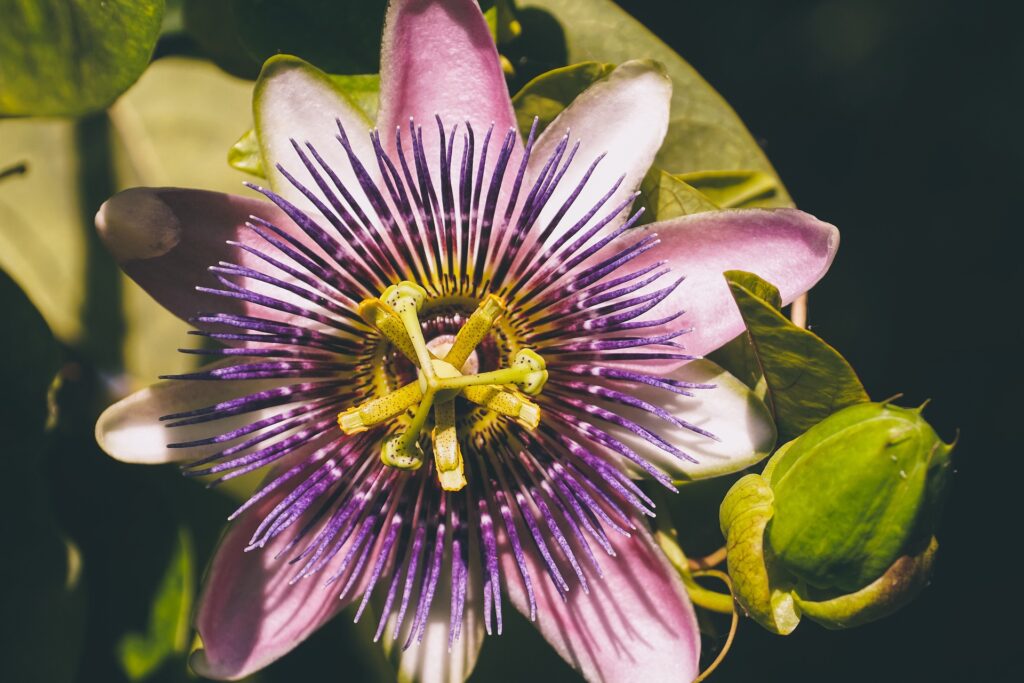
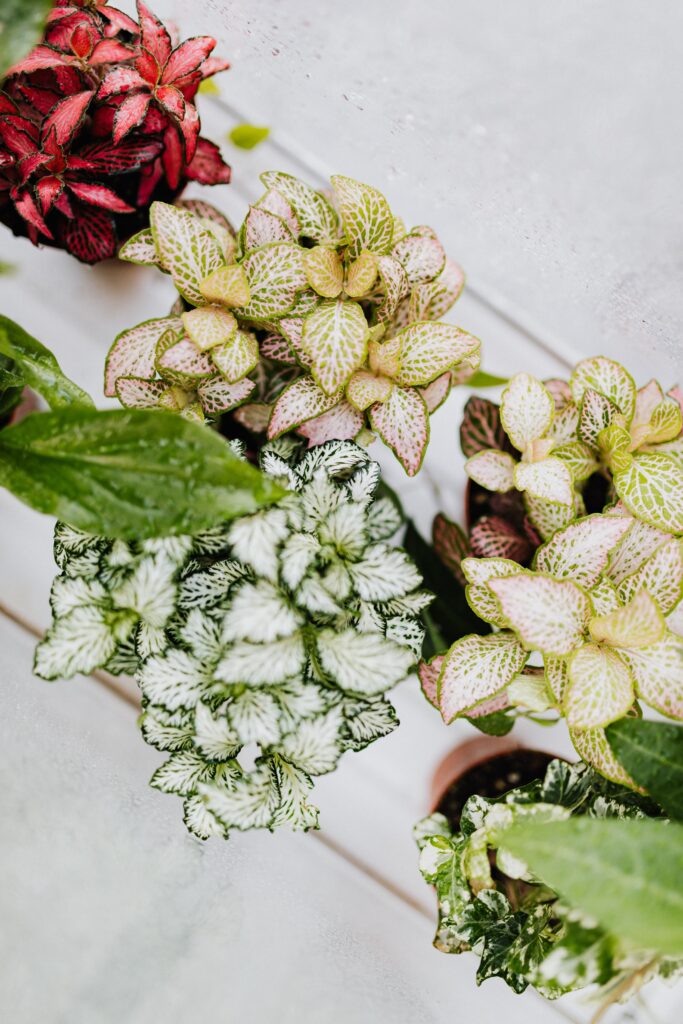
- Rubber tree
- Parlor Palm
- Danish Ivy
- Coleus
- Monkey plant
- Paradise palm
- Lady palm
- European fan palm
- Canary Island palm
- Pony Tail Palm
- Bamboo palm
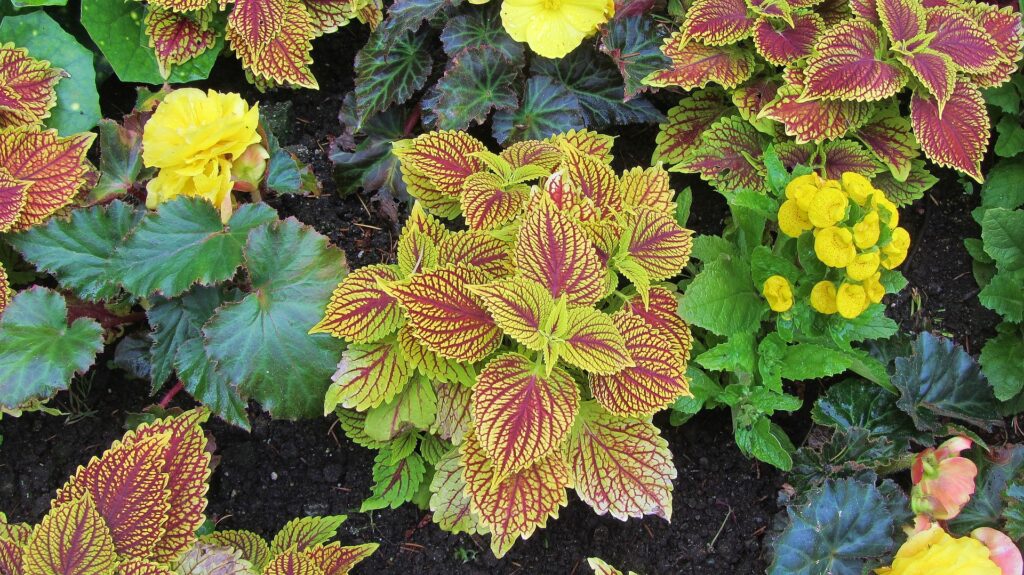
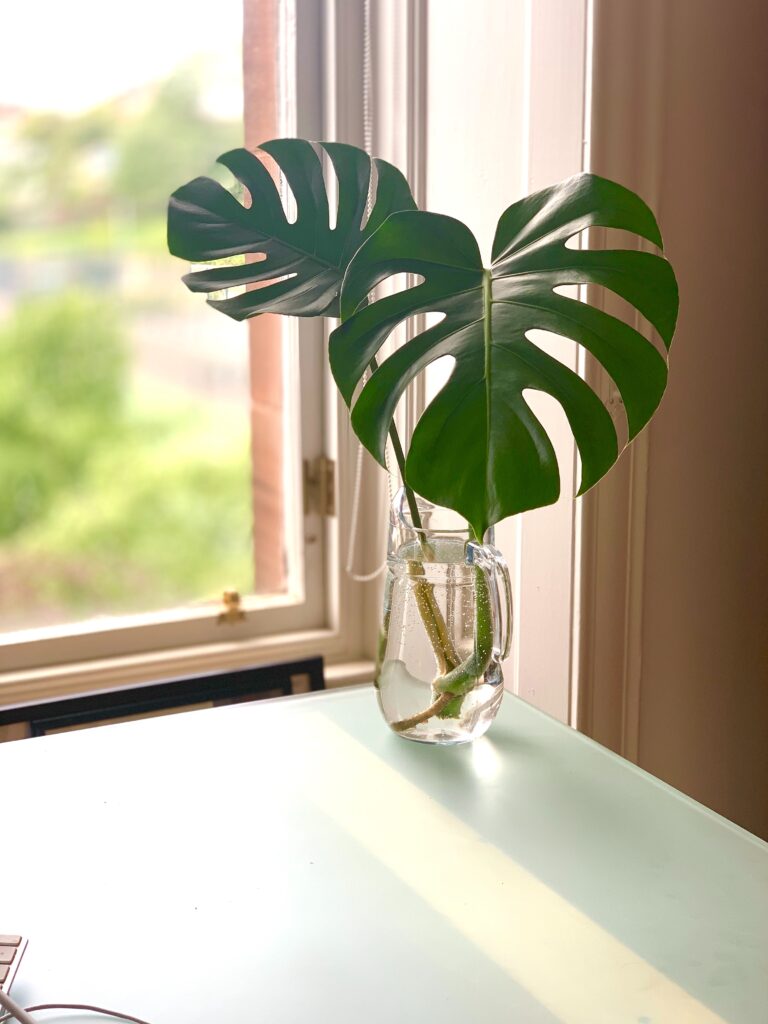
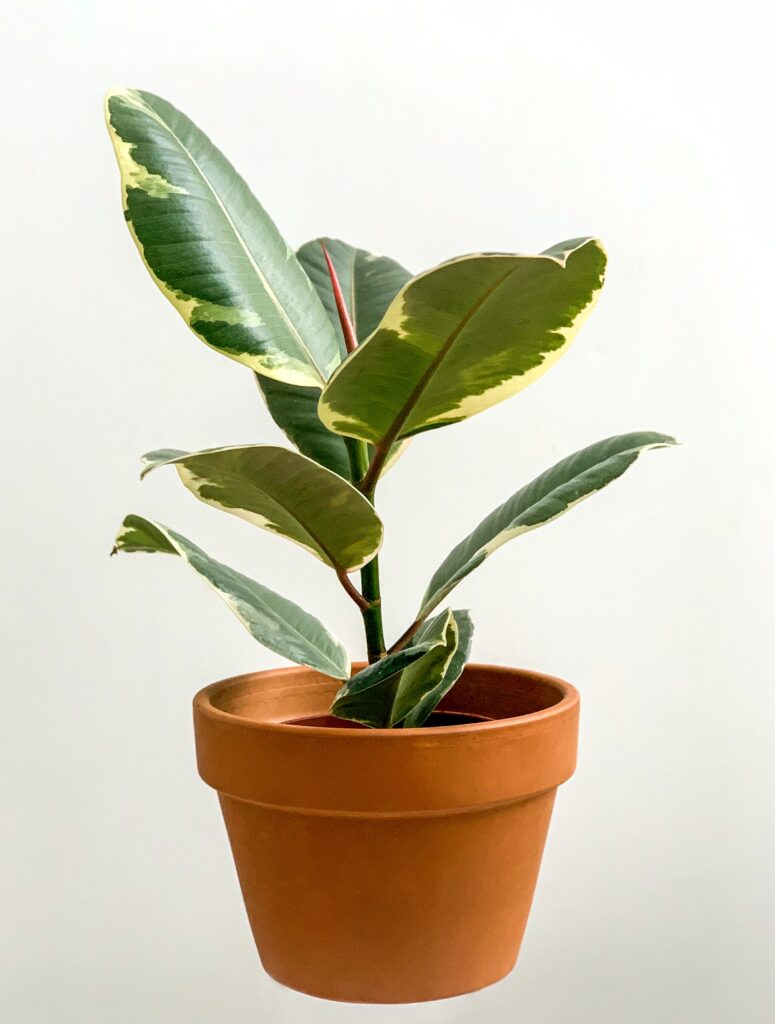
- Fig tree
- Umbrella tree
- Dragon tree
- Spearmint
- Peppermint
- Lemon balm Basil
- Chamomile
- Chicory,
- Cilantro (also known as coriander or Chinese parsley),
- Dandelion
- Dill
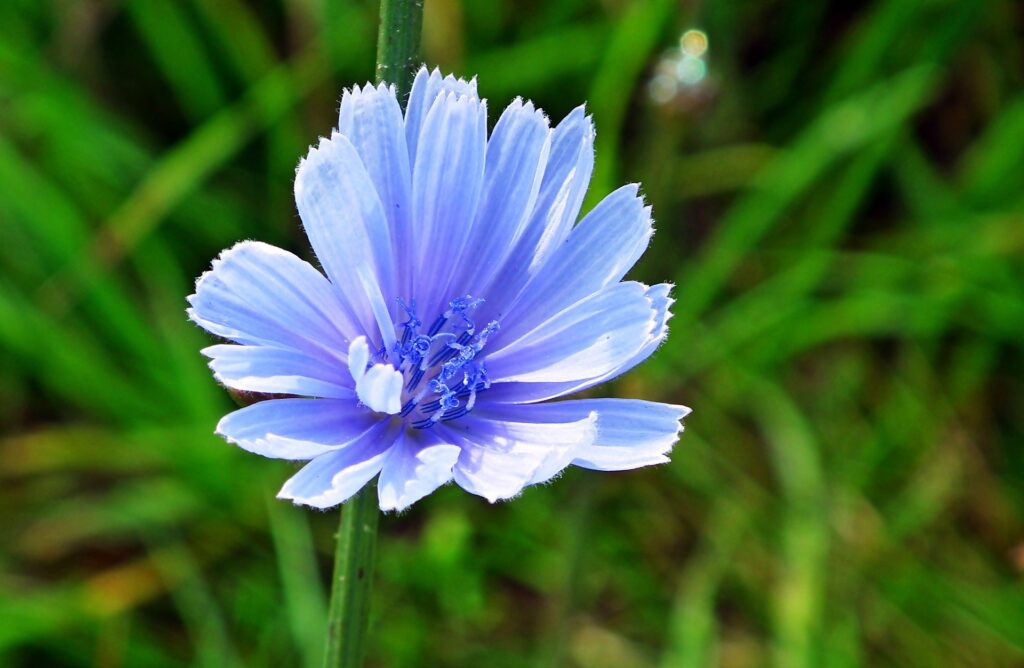
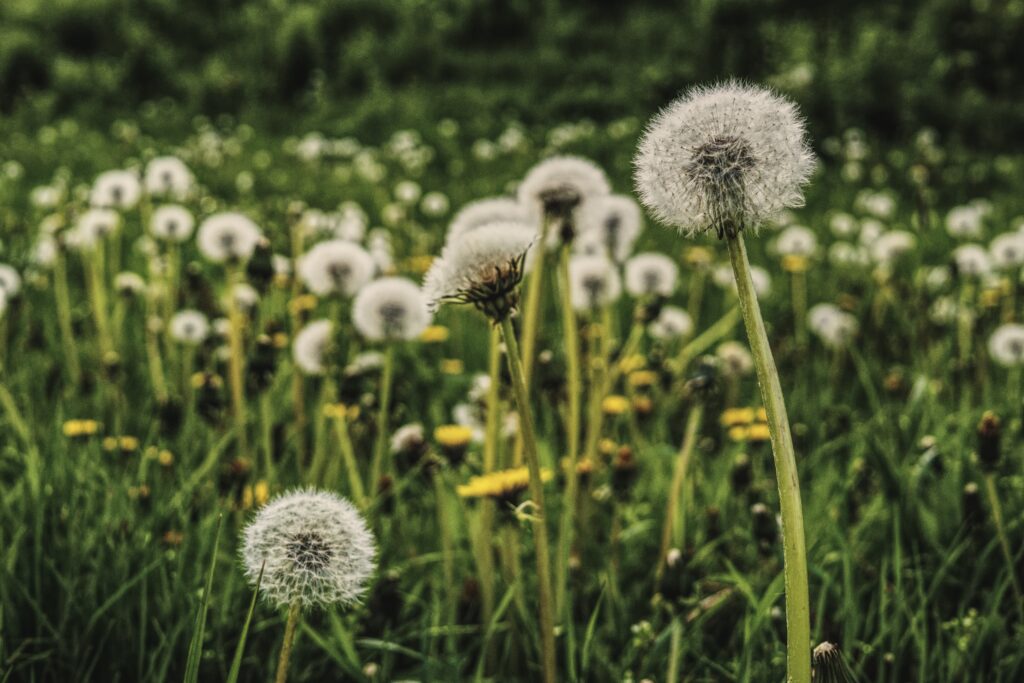
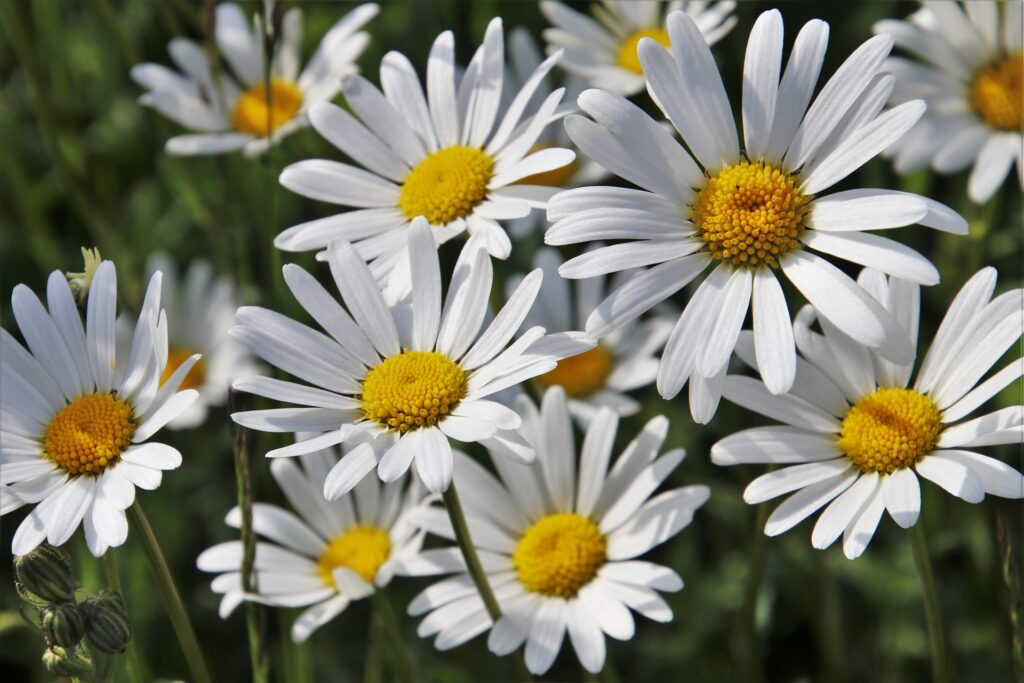
- Ginger root
- Fennel
- Lemon balm
- Oregano
- Rosemary
- Thyme
- Parsley
- Nasturtiums
- Begonias
- Christmas orchid
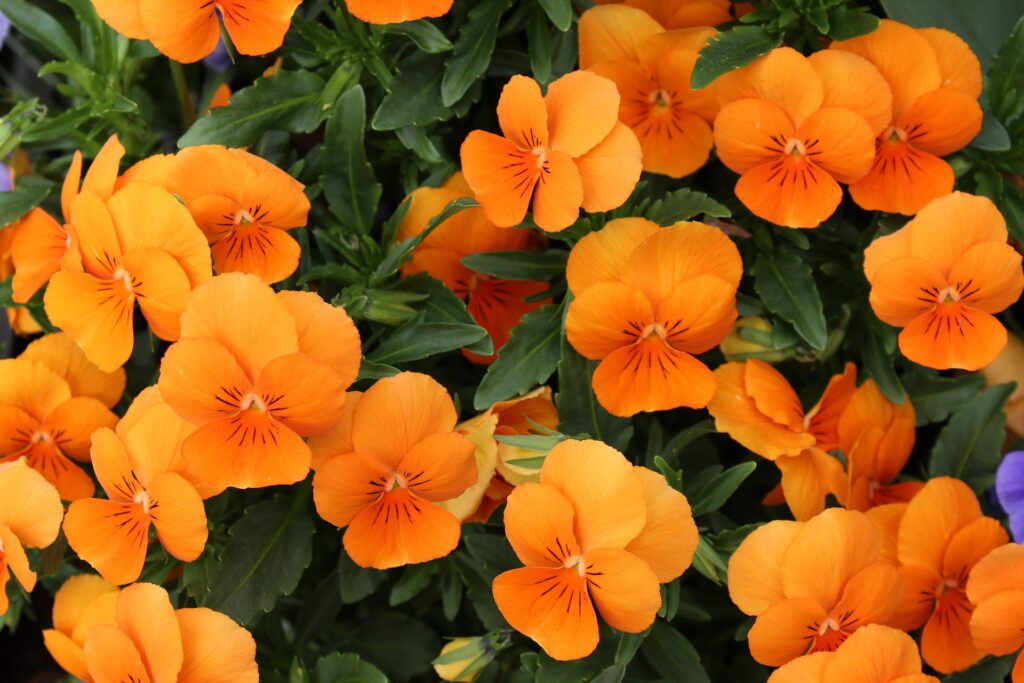
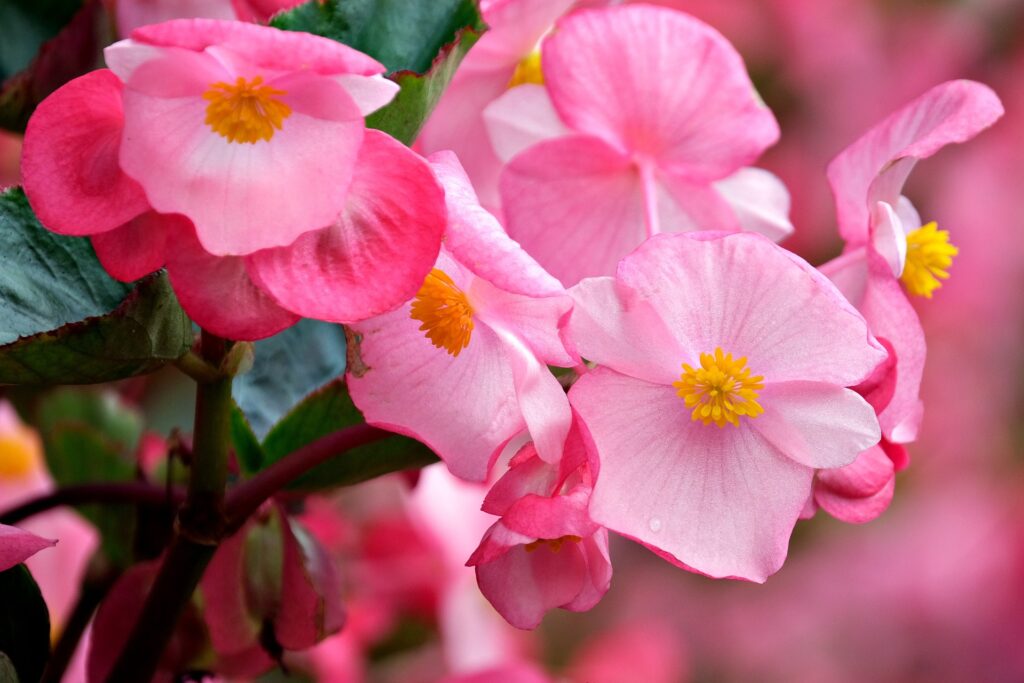
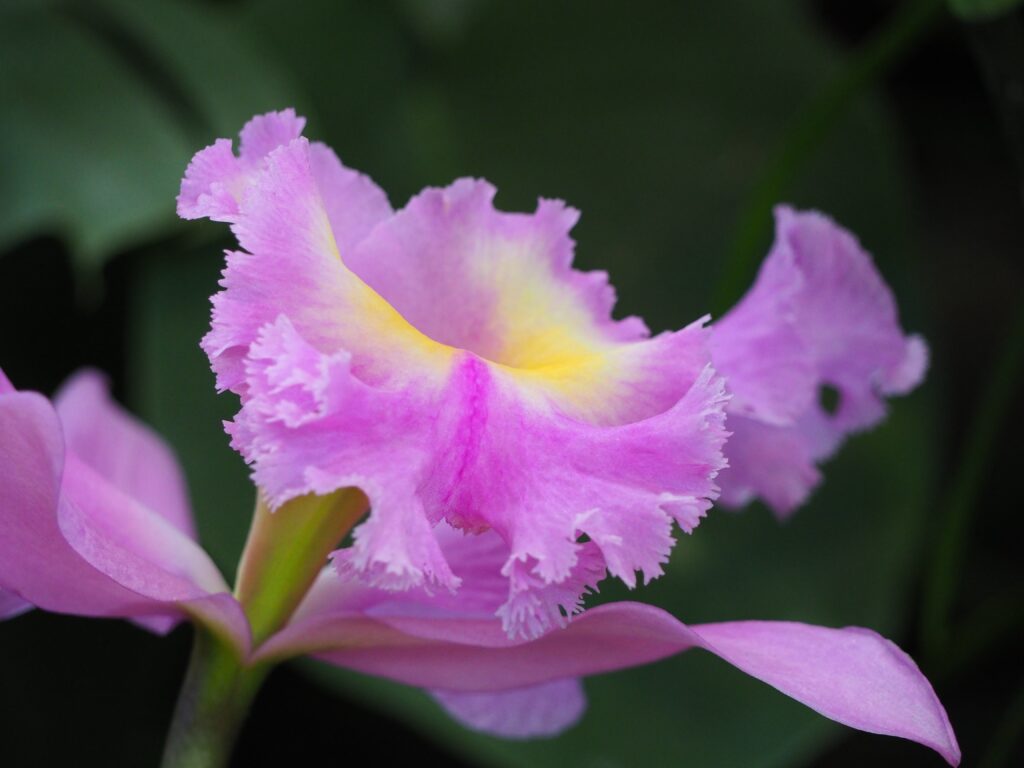
- Brazilian orchid
- Cocktail orchid
- Moth orchid
- Mother fern
- Ming fern
- Bottle bush fern
- Bird’s nest fern
- Lace fern
- Squirrel’s Foot fern
- Sword fern
- Boston fern
Remember that if you notice your pet bird seems sick after eating any of the mention plants or any plant which you do not know about then it’s best to take your pet immediately to the vet. A point to be noted is that the plants mentioned should be kept other than theese plants may be toxic.
The vet will help you know which plants are safe and which ones are not. This will also let you know about what you should keep in mind while the pet bird is free and roaming around outside and exploring things. You may ask your vet to let you know which plants and things are safe to consume and which aren’t.
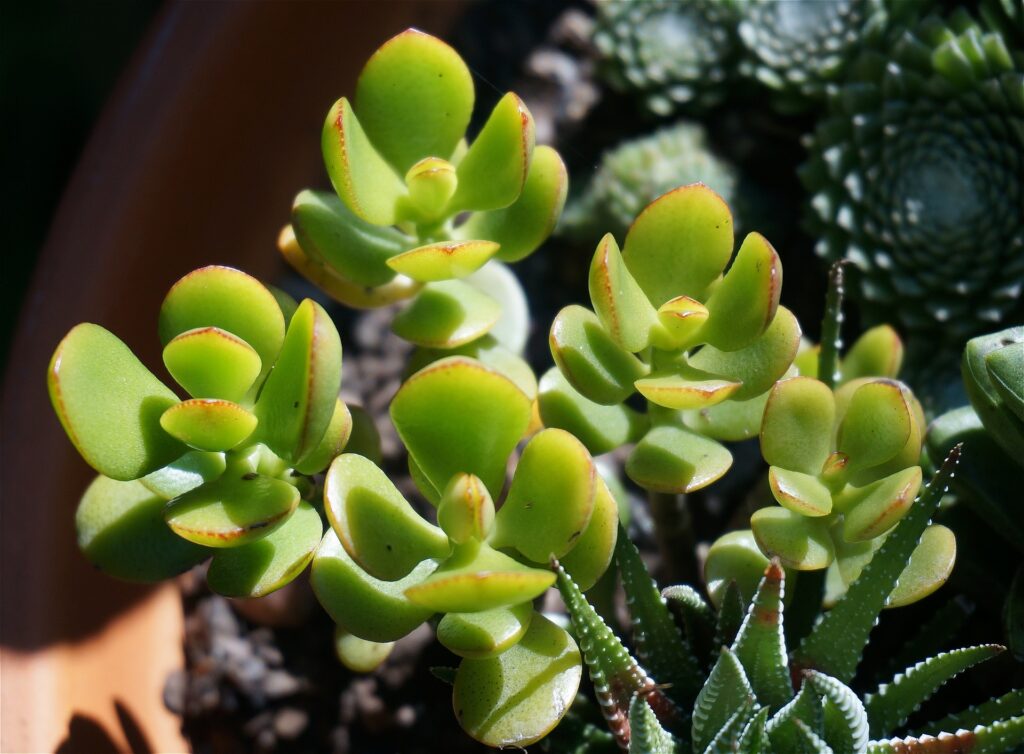
Make sure that the birds get proper ampunt of sunlight at day and sleeping hours at night. You can cover their cage with clothes so that they do not get disturbed with lights on. Recommended hours are 10-12 hours of darkness at night.
4. Nutrition and What Should Be Given As Food :
A well-balanced diet for an adult pareeot should consist of High Quality Bird Pellets with Fruits and Vegetables. Remember that the amount of the pellets should be around 75% while 25% should be made up of Vegetables and Fruits.
You can offer Nuts and Seeds but only in limited quantity. This is one of the most important tips for taking care of a pet bird. Seeds mix which includes seeds, nuts and vegetables are one of the best choices as they give all the nutrition your pet needs.
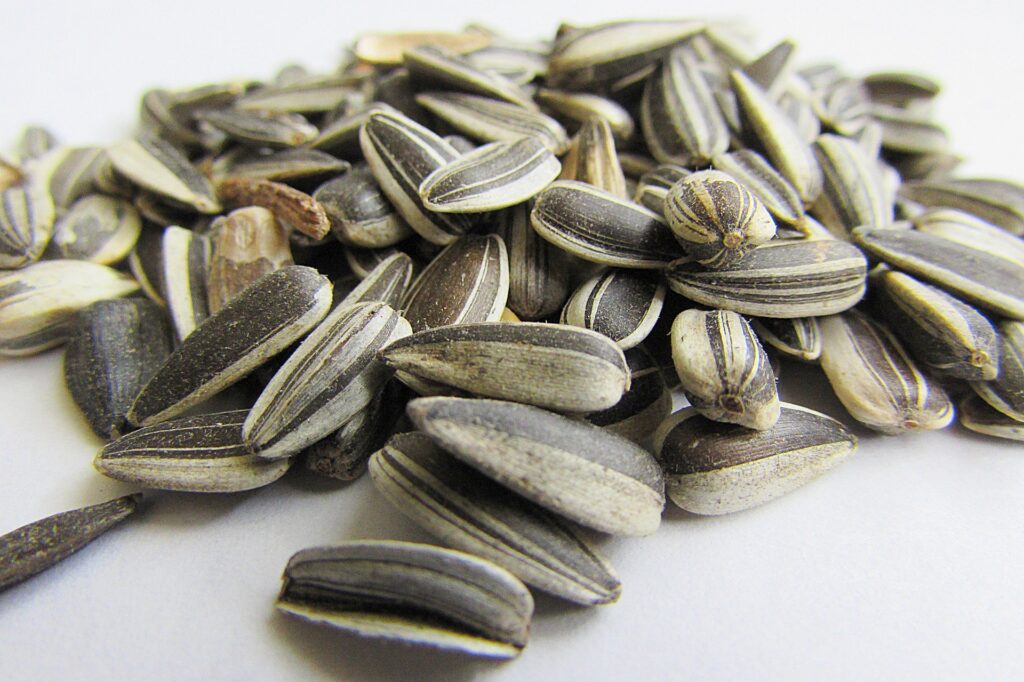
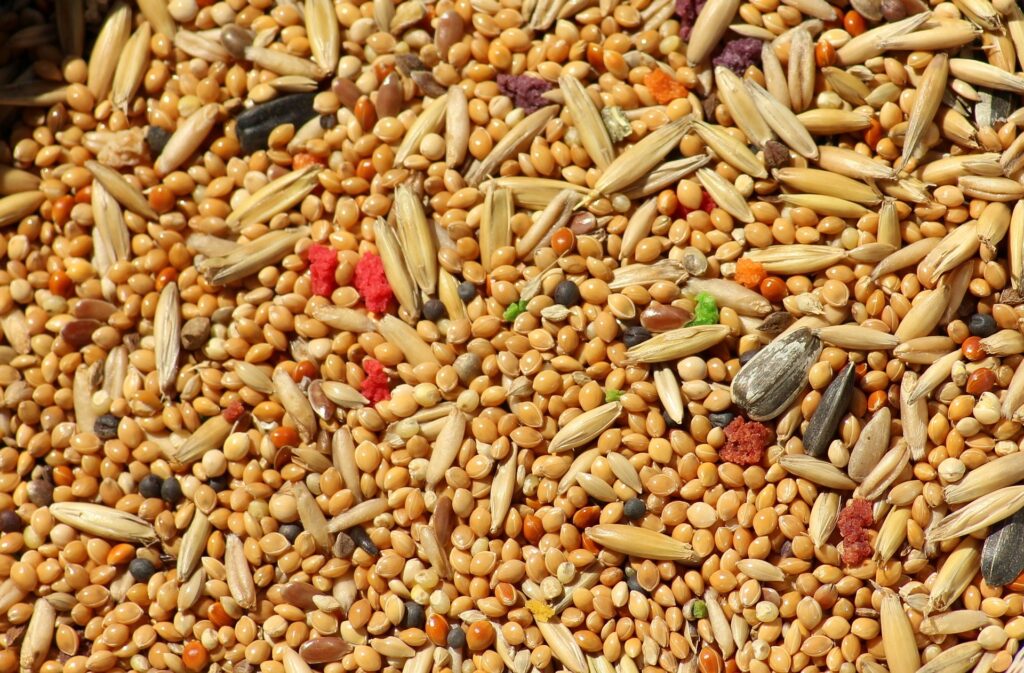
If seeds and nuts are given in excess then it can lead to various heart and liver diseases like cholesterol and fatty liver disease. Also obesity can occur if seeds are given in excess because they have high proteins and protein should be given in less amounts.
Avoid giving avocados, and food which we, humans consume especially sweet and sugary foods and salty food as well. You can give fruits instead but remember to take out their seeds and pits out before giving them to the birds.
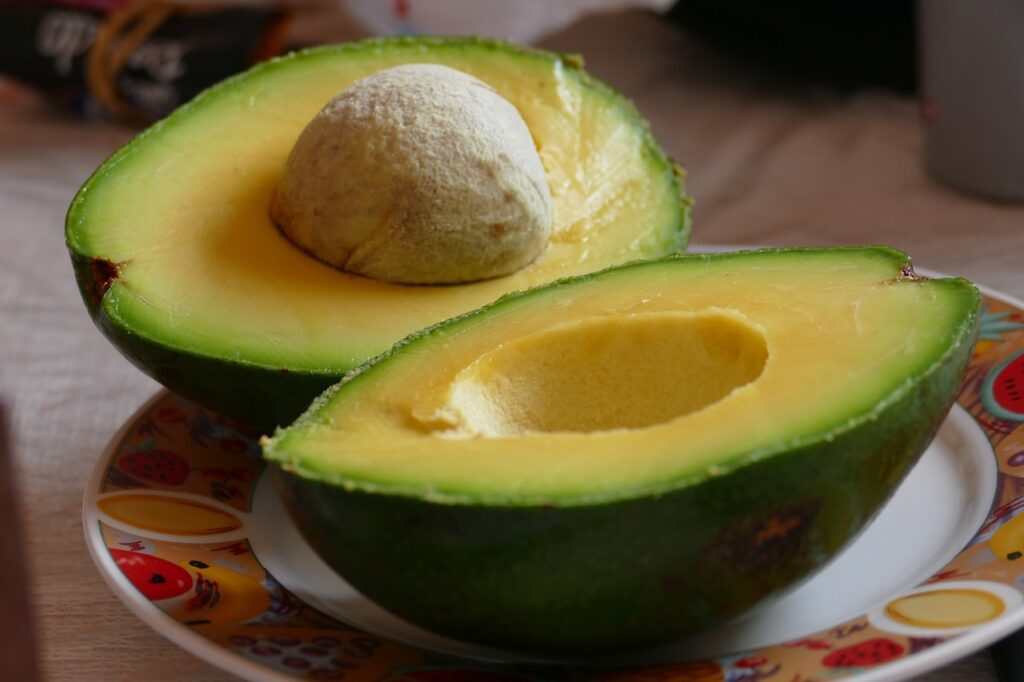
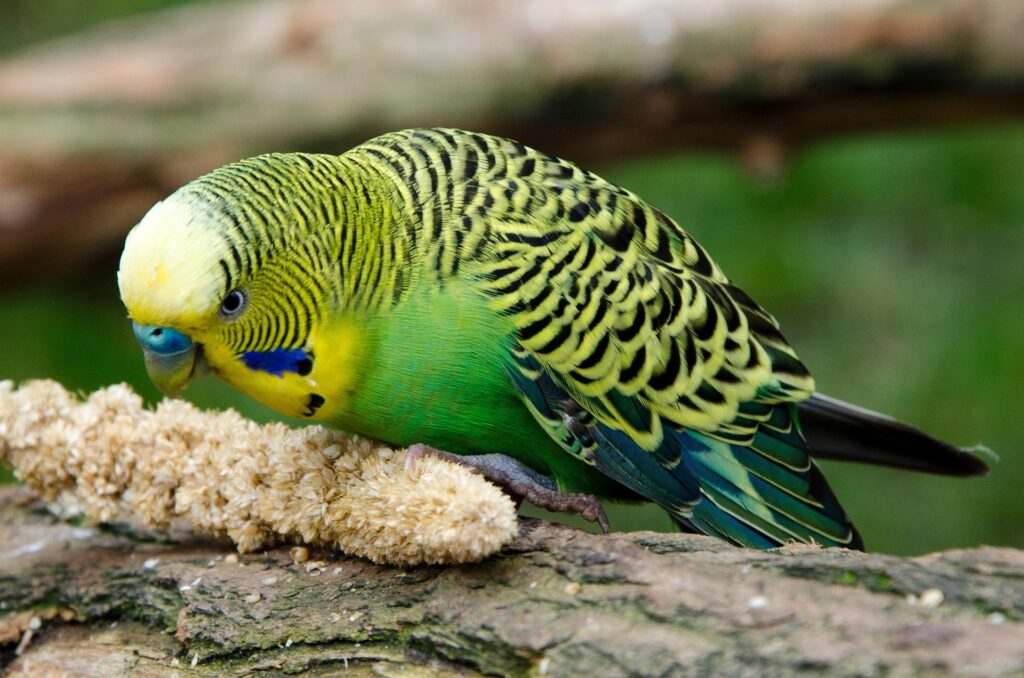
Many fruits and vegetables can be given to the pet birds but you should reserach before giving them anything which you don’t know about and you should ask the food you can give to your pet from a vet.
Remember everything you give is good and can promote good health and development but anything in excesses and in higher amounts will give your pet a hard time and upset their stomachs and make them sick. So make sure you know that the food you are giving to your pet is safe and in good quantity.
5. Changing from Seeds to Pellets :
You will notice that the birds who are used to eating bird seeds will face a hard time adjusting to Pellets. It is because they are used to eating seeds but it is necessary to change their diet and provide them a balanced-diet so that they are healthy and free from any diseases.
All these tips for taking care of a pet bird will help to maintain good health and live a long life for pet birds.
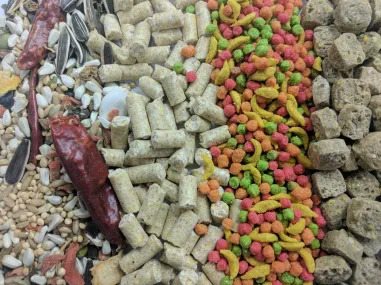
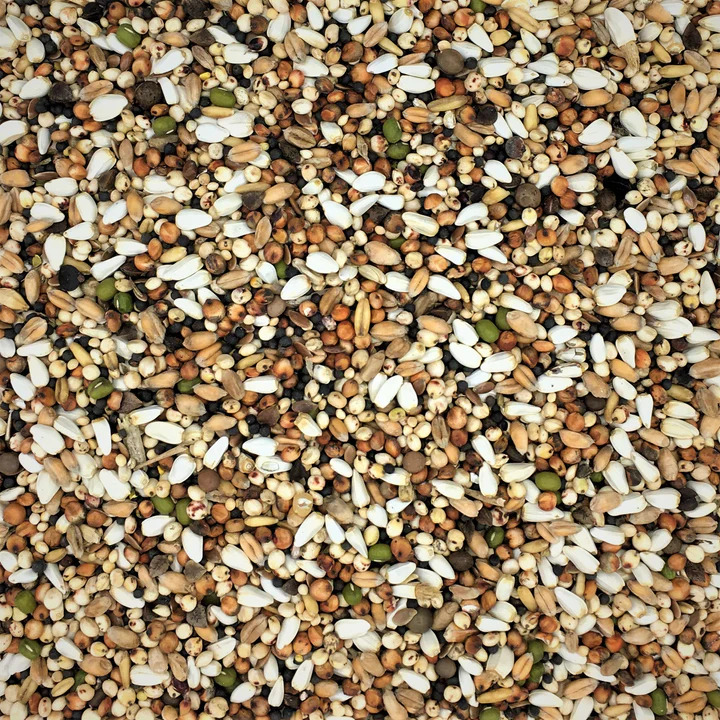
It takes time, patience and persistent efforts and they will adjust well to their diet. The time period for the change of food may take place over months to a year or more. But worry not as birds live around for decades so you can be assured even though it feels like a long time.
DO NOT IGNORE YOUR BIRD WHEN THEY ARE NOT EATING FOOD. ALSO DO NOT FORCE FEED YOUR BIRD. If they are not eating something you have given them, then you shouldn’t ignore these signs.
Try mixing pellets with seeds, or give them pellets with something else like fruits and vegetables. Slowly change their food as they will not adjust quickly with the changing food and their eating habits.
First step towards the transition to a new diet is calculating the quantity of seeds the bird eats in a day then after measuring it you can change the seeds to pellets. You can slowly change the seeds with pellets by switching them. You can keep a scale or weighing machine which can help you in determing the right amount of pellets and weight of your pet.
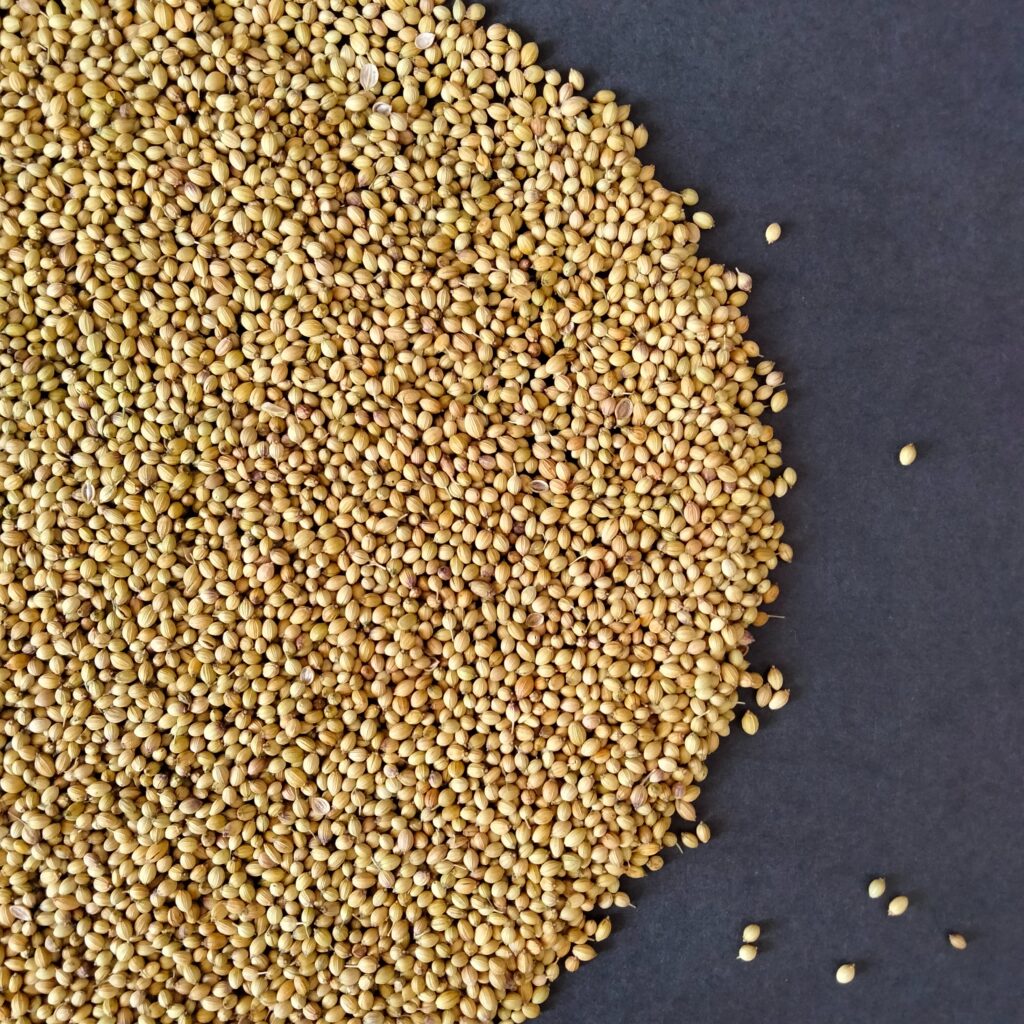
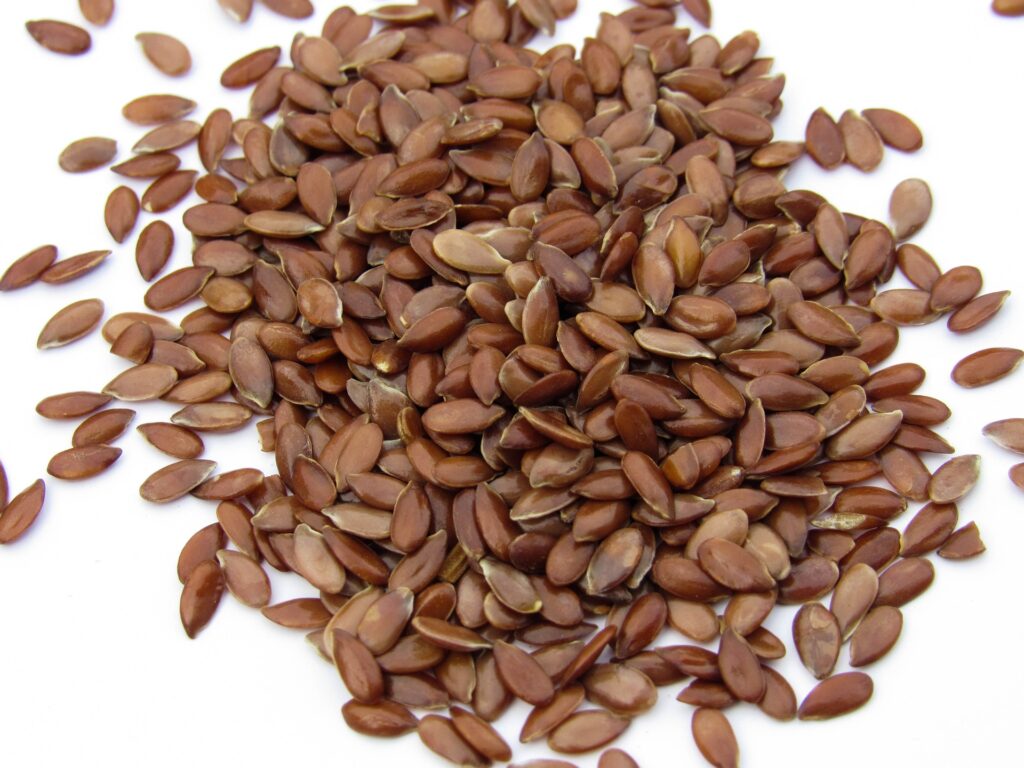
After this you can schedule the transition. You can start by giving few pellets in the first week. Gradually you can increase the amount of pellets you give in week two. In the following weeks you can focus on reducing the amount of seeds by replacing them with pellets and in this way the birds will eat more pellets and lesser seeds.
It is difficult, time-consuming and sometimes discouraging but worth it because your pet will have long and healthy life by maintaining a balanced diet.
6. Essentials like Food and Water Bowls :
Just like Pet Dogs and Cats, Pet Birds should also be given a food and water bowls. Keep the bowls/dishes placed at a high place to reduce the risk of getting food and water contaminated by their droppings.
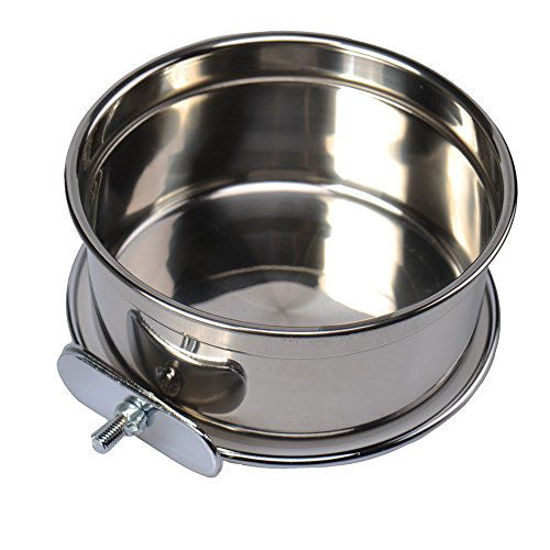
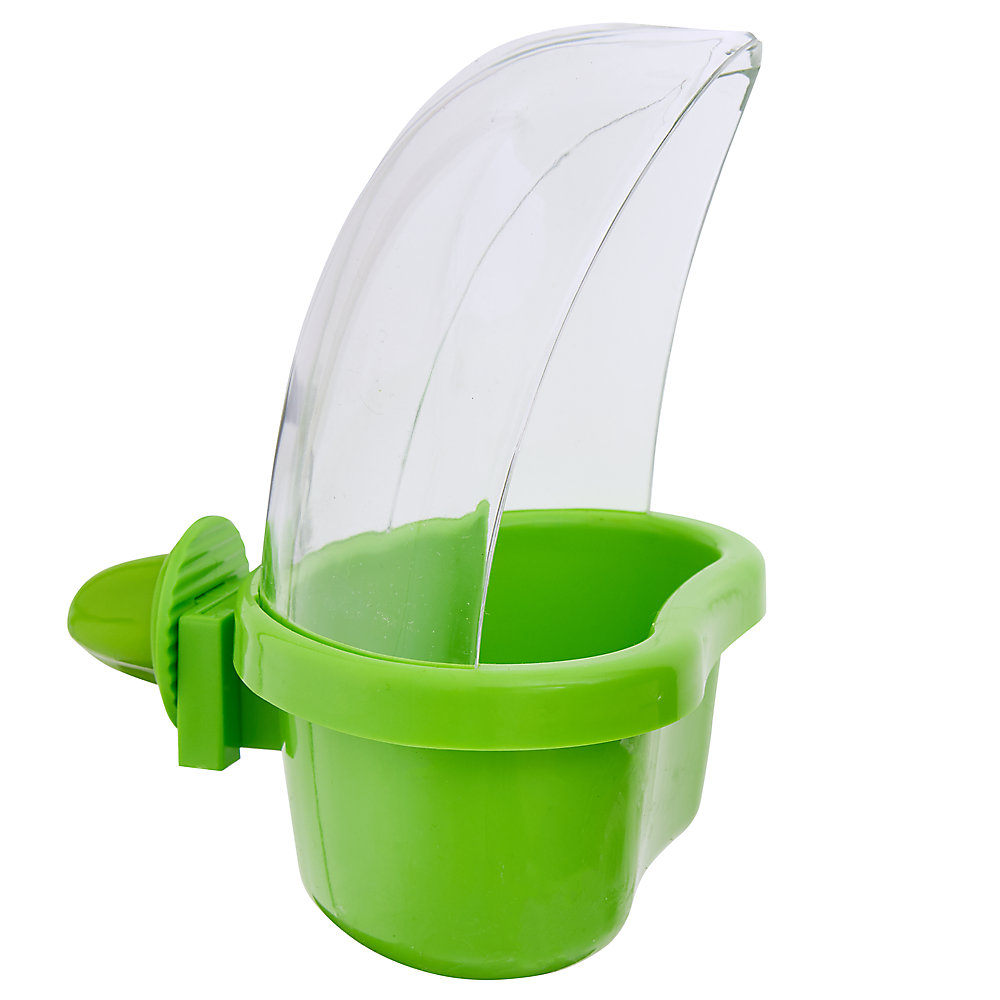
Keep the bowls and dishes full at all times and clean them regularly as well. Provide clean and safe drinking water as hydration is necessary and keep the water bowls filled properly.
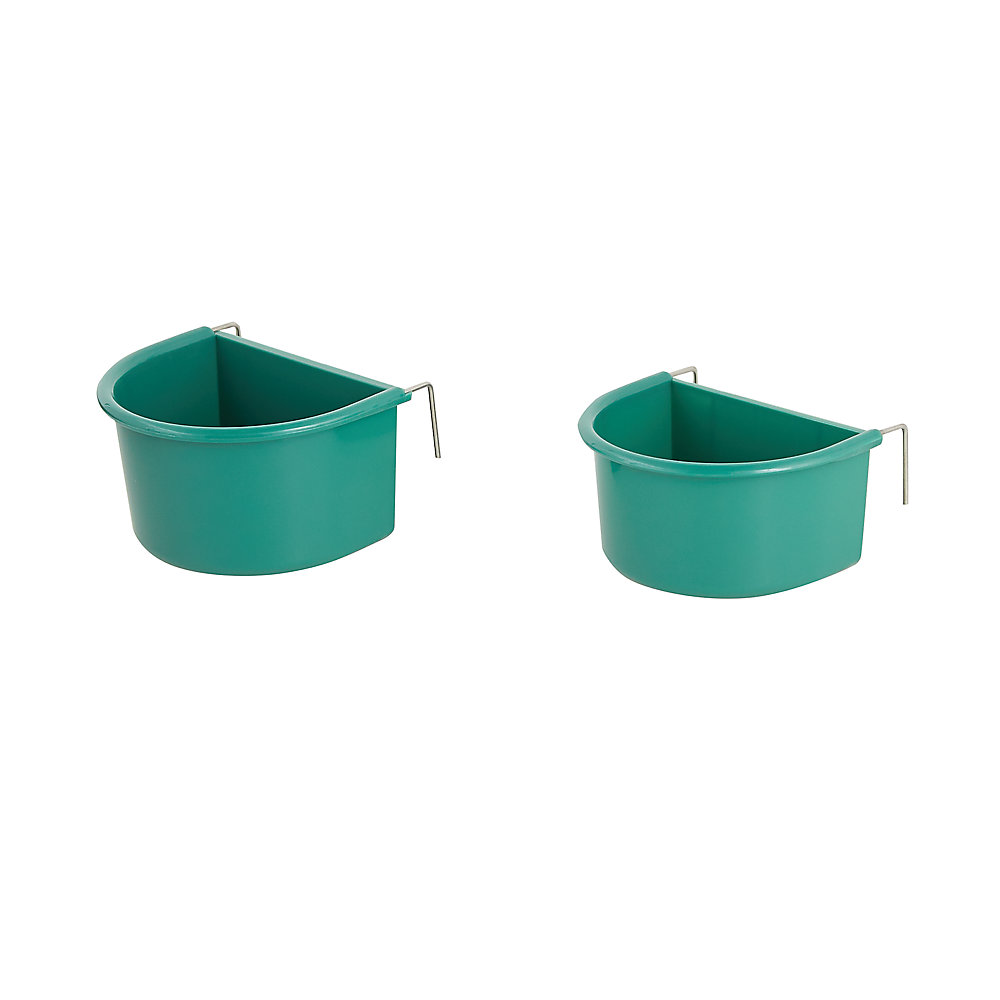
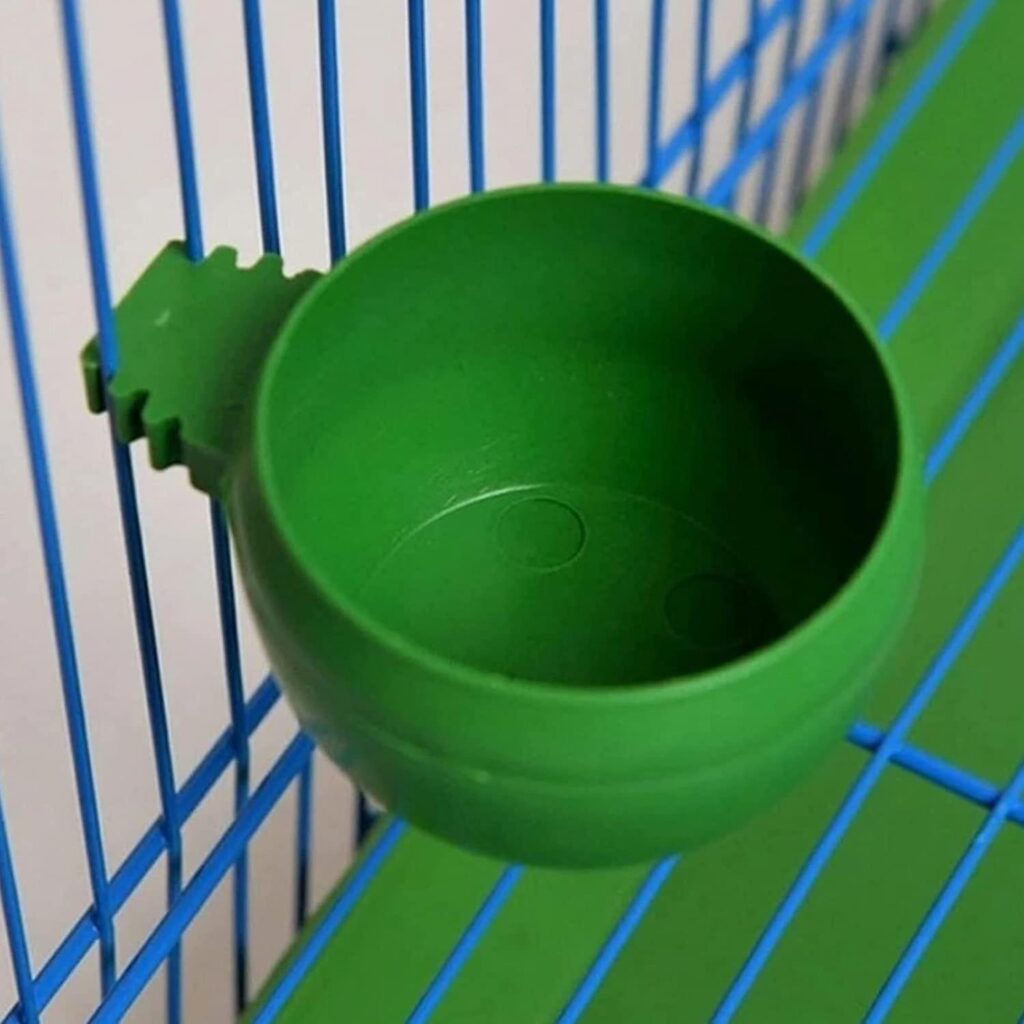
Variety of bowls and dishes are available, you can buy them either from a pet store or online. But make sure that the birds are comfortable using them and do not have any difficulty using them. Check whether the bird has not dropped seeds or other materials into the water bowls.
7. Grooming and How To Provide Bath :
Birds should be given baths to keep them clean and help them maintain their feather and skin health. This is part of their grooming and it should be done regularly to avoid any problems. They love to play in water so you can prepare a small tub or pool filled with half water and watch them have fun.
You can provide a tub, or dish filled with water or you can spray water on them and leave your bird under a faucet so that they can take a bath. Clipping of nails regularly should be done to promote good health of nails and ease in climbing, perching and eating as they are seen to grab things by their feet while eating for support.
If nails are left untreated then they can become curved and get inside the skin of their toes which will hurt them. Fungal infection can also occur with skin infection and problems in nails. So we have to make sure we clip their nails and remove any thing which can hurt their feet.
8. Tips For Playing and Exercising :
Exercise enables birds to stay fit and maintain good health. You can play with them as it will not help you bond with them but also help them exercise around with you.
You can play with them in many ways. There are toys also available to help them play around. Swings, Ladders and Ropes. You can play with them many games as well. They love to play and are just like dogs and cats but with wings and a miniature versions of them.
You can play Chase, Climbing, Fetch or Playing Ball, Step-Ups, Foraging and Dancing. Many birds love to dance as well. Simply discourage agressive behavior by stopping the game or trying to talk to them and addressing why they get angry while playing with you.
Many birds also like puzzles and to learn tricks so you can teach them tricks like how to fly to you when you play a whistle or call their names, play football or basketball, or anything else.
9. Tips for socialising with the pet birds :
Birds are very social in nature so you have to make sure you interact with them and bond with them just like the way you do with a pet dog or cat. They love attention and are as affectinate as a dog and cat. They have their own ways to let you know they are happy. One of the tips for taking care of a pet bird is to be around them and let them knoe that they are not alone.
As you may know they are known to talk with their owners and their favorite person so you should talk with them. Many birds such as the Grey African Parrots are known to talk like Humans do and cockatiels are known to whistle when they are happy. Cockatoos love to dance.
As we discusssed before they love love learn new things it may be a trick or solving a a puzzle, so you may give them toys or puzzles made especially for birds to solve.
They love when they are around you, they feel secured and safe. When they get comfortable and familiar with you then they also will come to you, sit beside you and you can pat them. They also are known to preen other birds, you can do the same.
Give them treats and they just like cats and dogs will learn tricks this way. You can share things like nuts, fruits and vegetables while you are eating around them. This will be helpful for better bonding.
Having a bird as a pet is a big responsibility, but very rewarding too. Birds can make great companions and, if you look after yours, you can really bond and flourish together! Just make sure you know exactly what your breed needs and give it all the love it deserves.
That’s all for today, here are all the tips for taking care of a pet bird and I hope that you get to have good time with your pet birds. They definitely make adorable and loving pets but with this they also come with commitments and responsiblities. I hope these all tips for taking care of a pet bird will help you or someone you know who have birds as their pets.
If you didn’t read the last post about cats and how to take care of them you may read them here :
https://www.wildnyou.com/tips-for-taking-care-of-a-pet-cat/
I have looked at several pellets which i think are suitable for pet birds and parrots and you amy shop for them online here :
For Indian Residents :
https://www.amazon.in/s?k=best+food+pellets+for+parrots+and+birds&i=pets&ref=nb_sb_noss
Toys and food and water bowls :
https://www.google.com/search?rlz=1C1PRFI_enIN1010IN1010&q=food+and+water+bowls+for+birds&tbm=shop&sa=X&ved=2ahUKEwiooMrthIeAAxUVat4KHWSdBQYQ0pQJegQICxAB [WATER & FOOD BOWLS]

